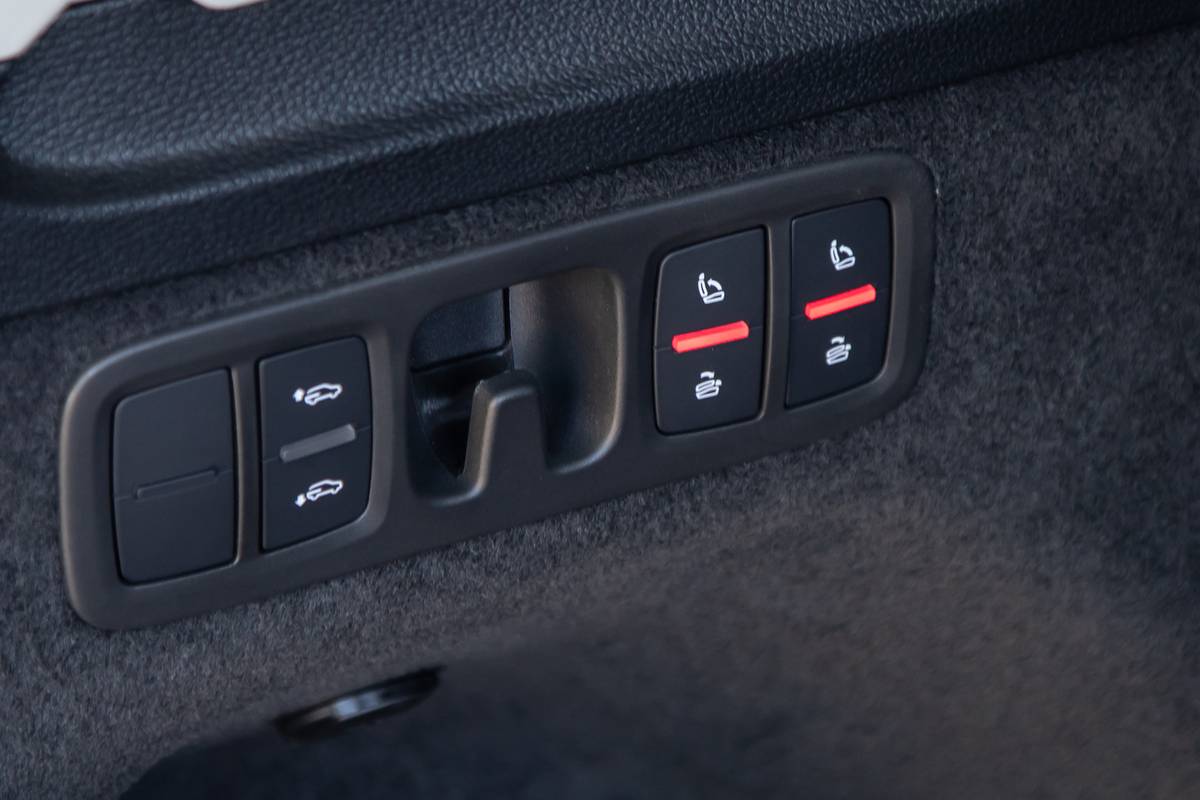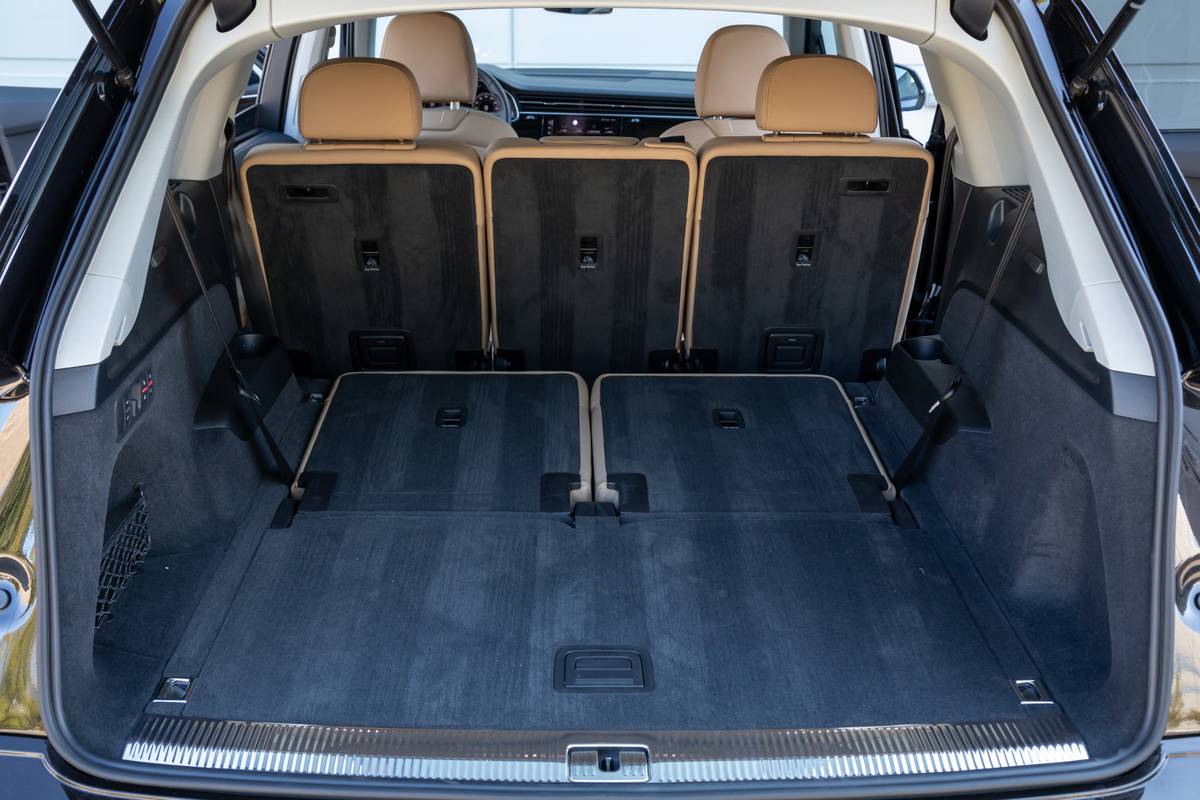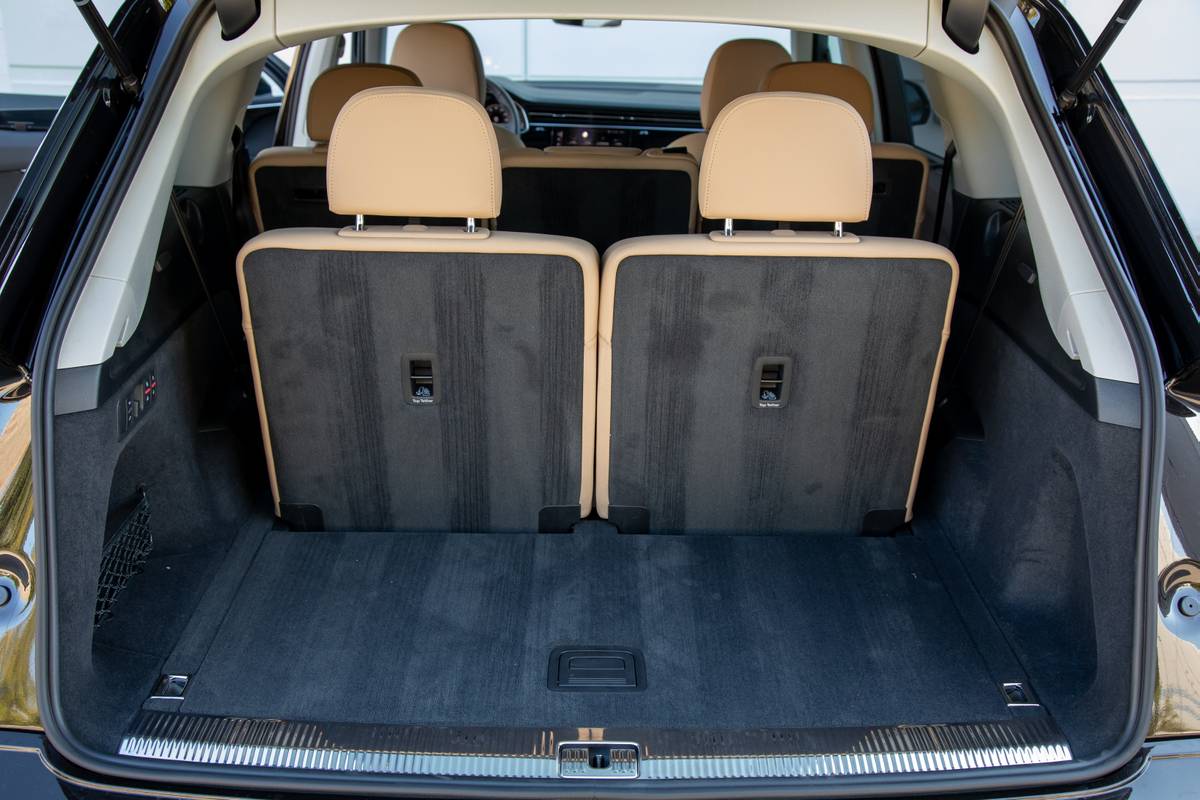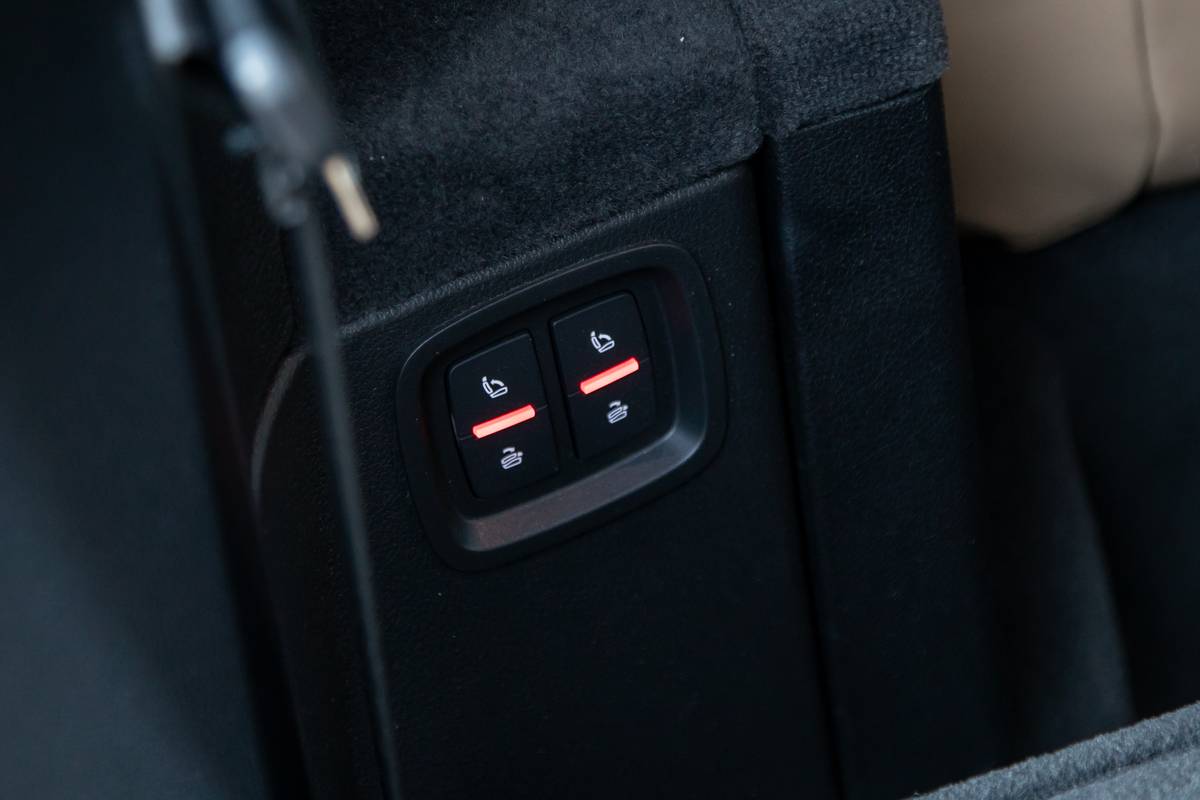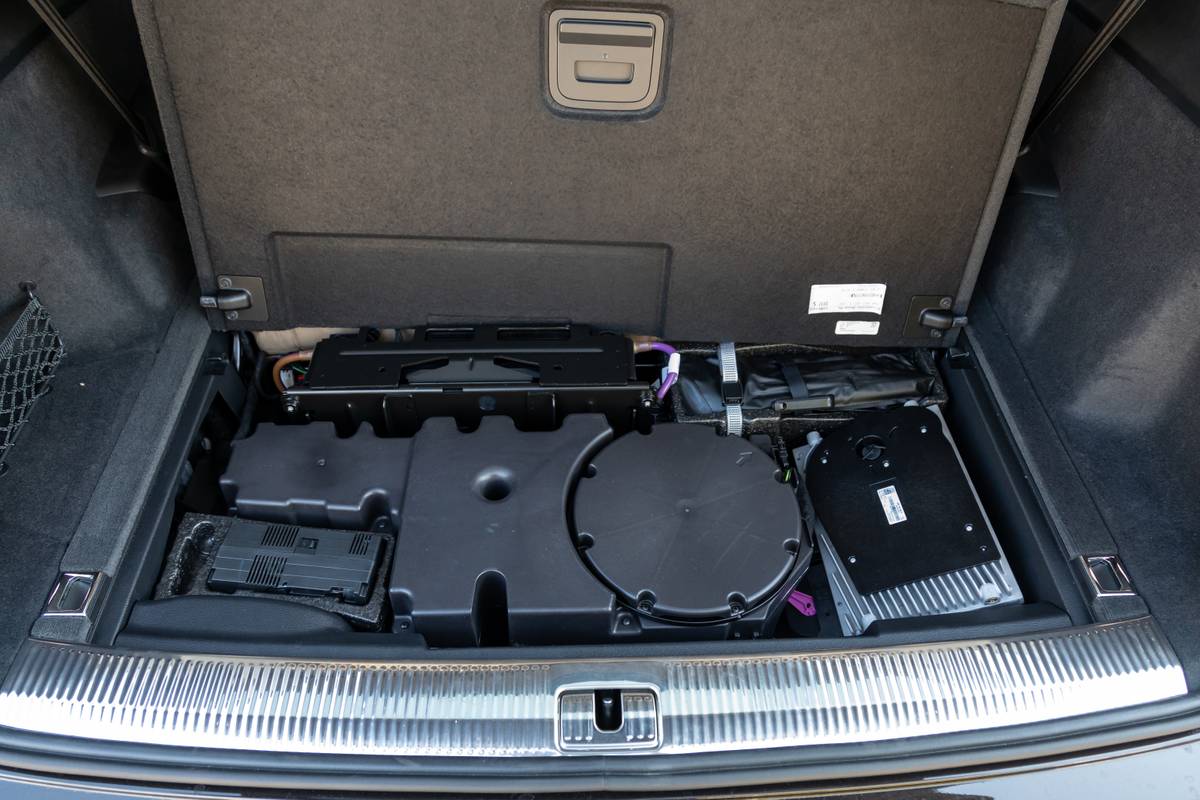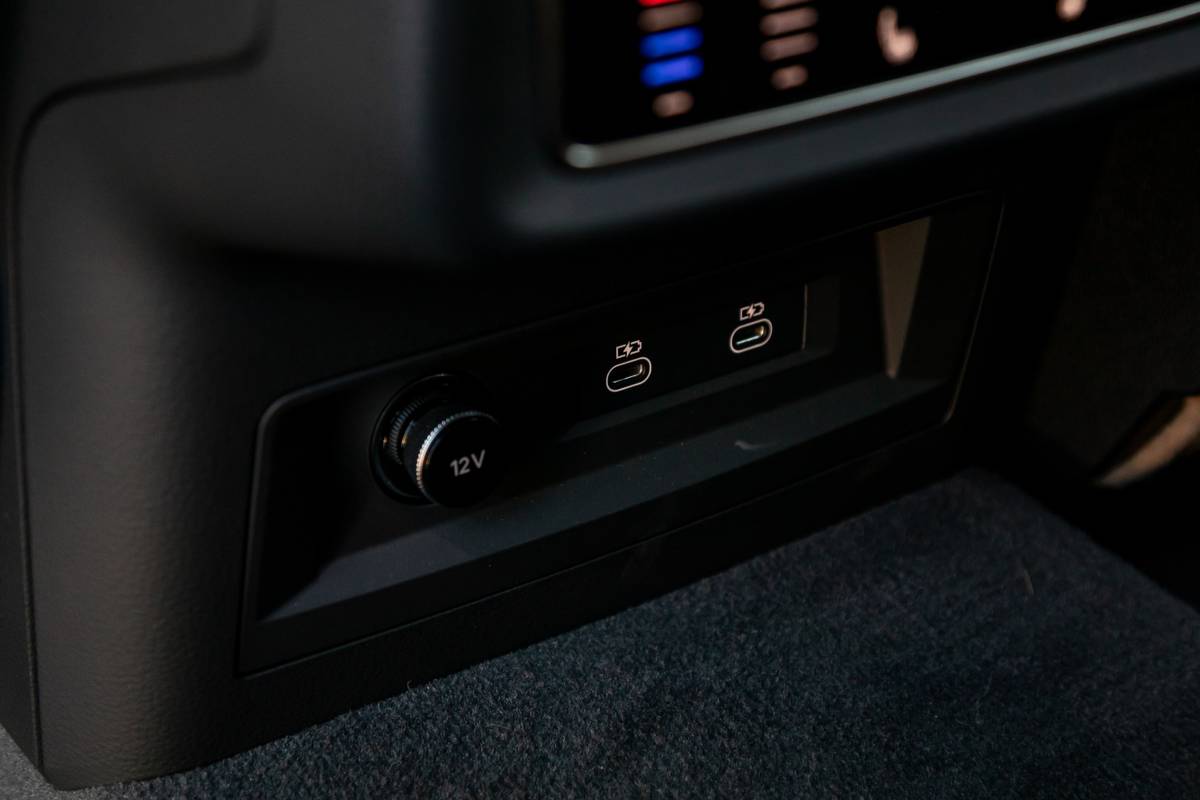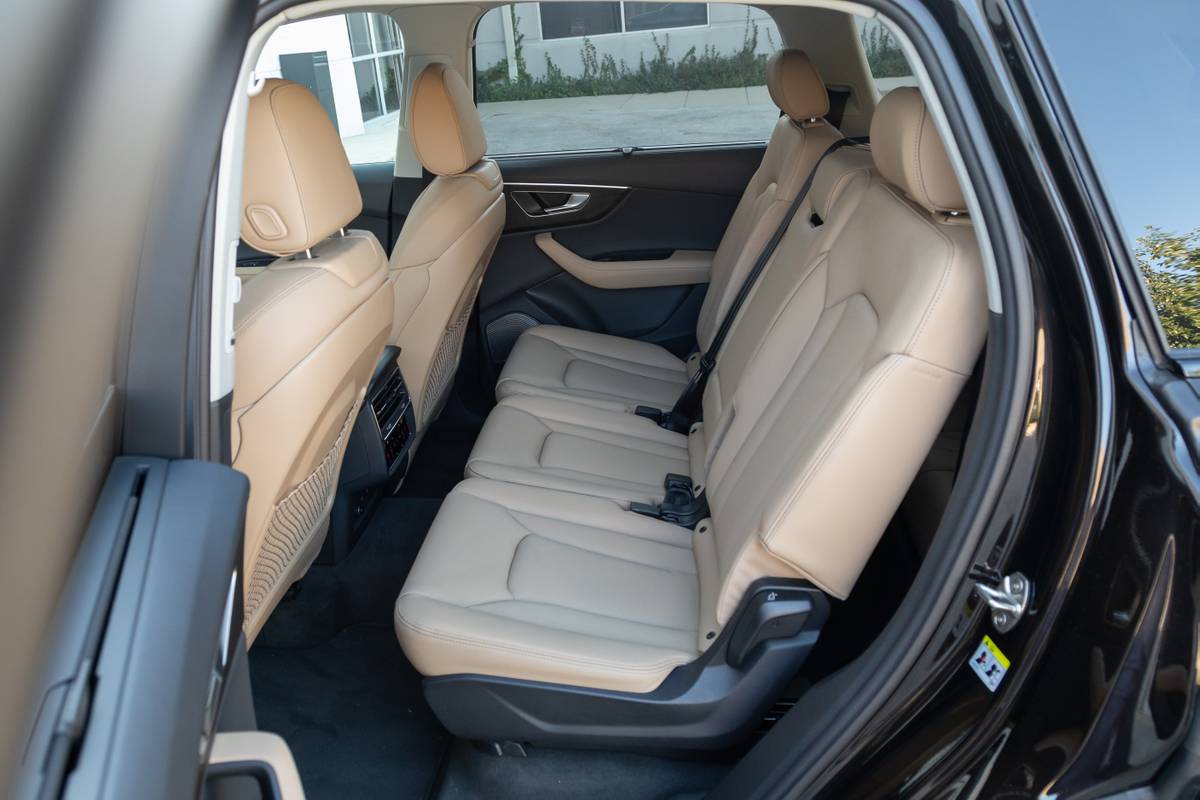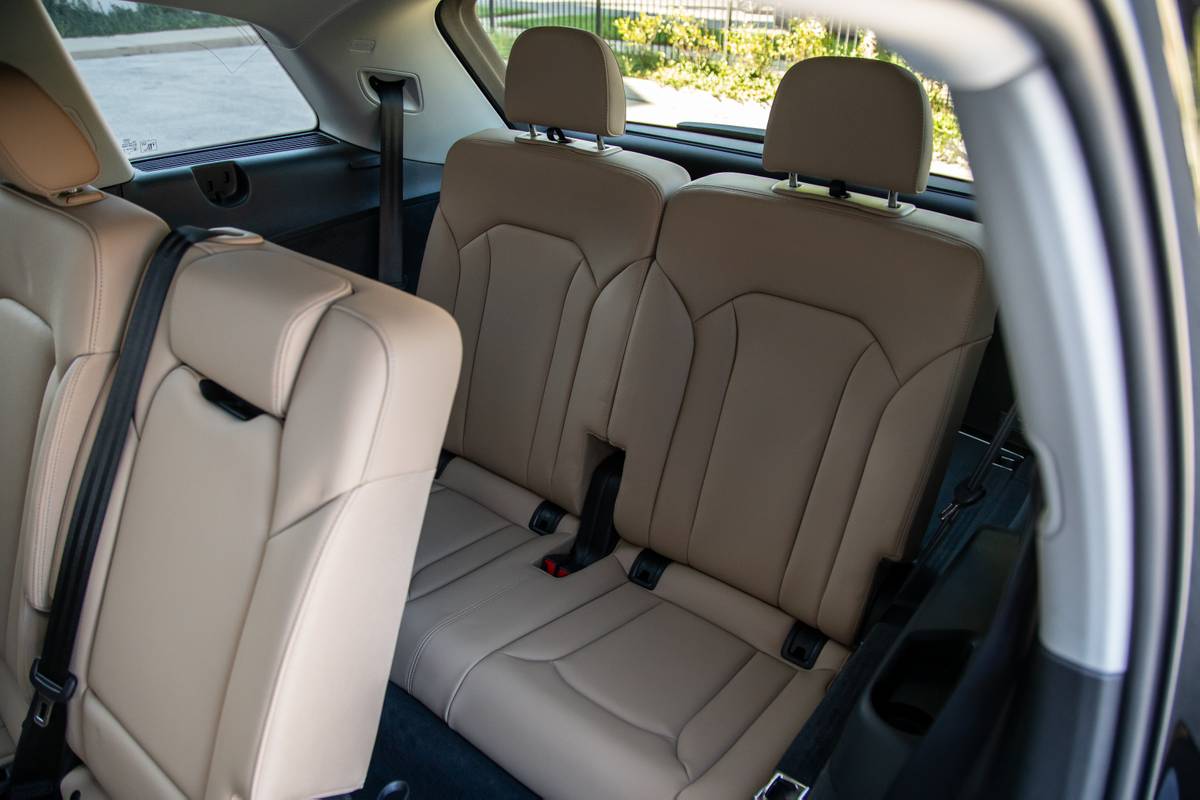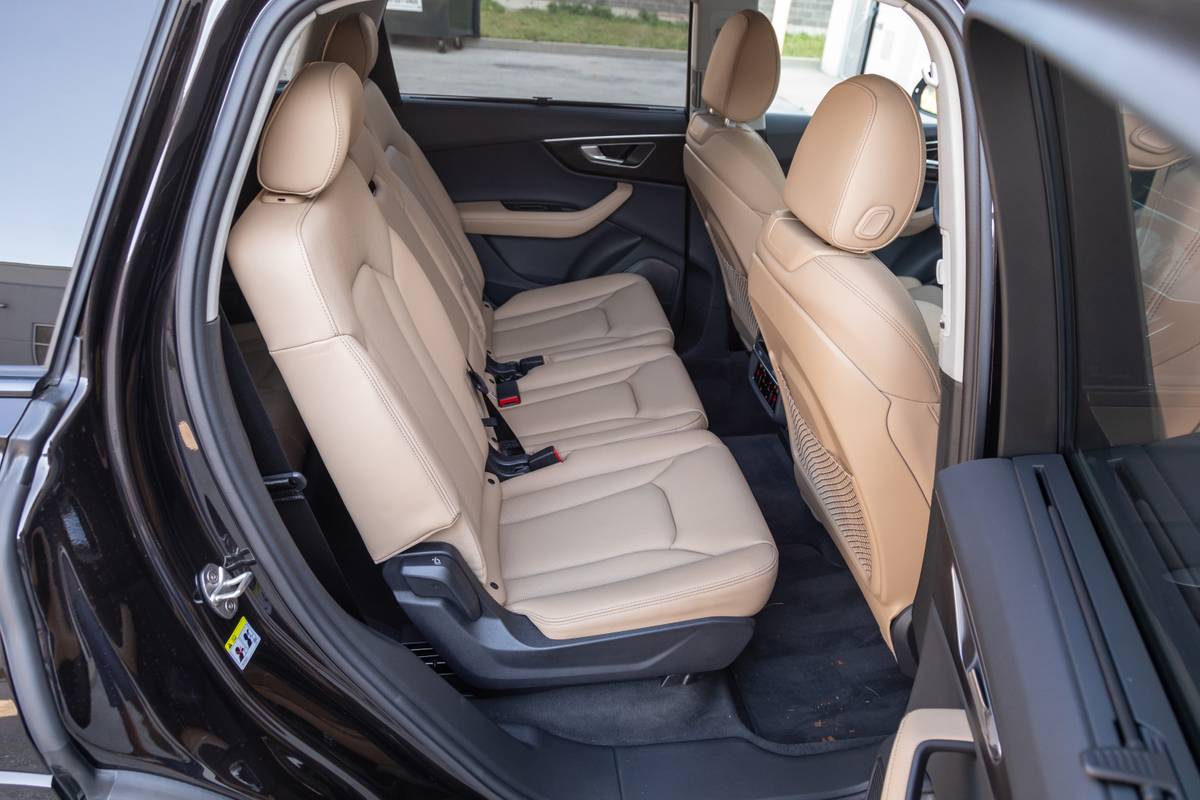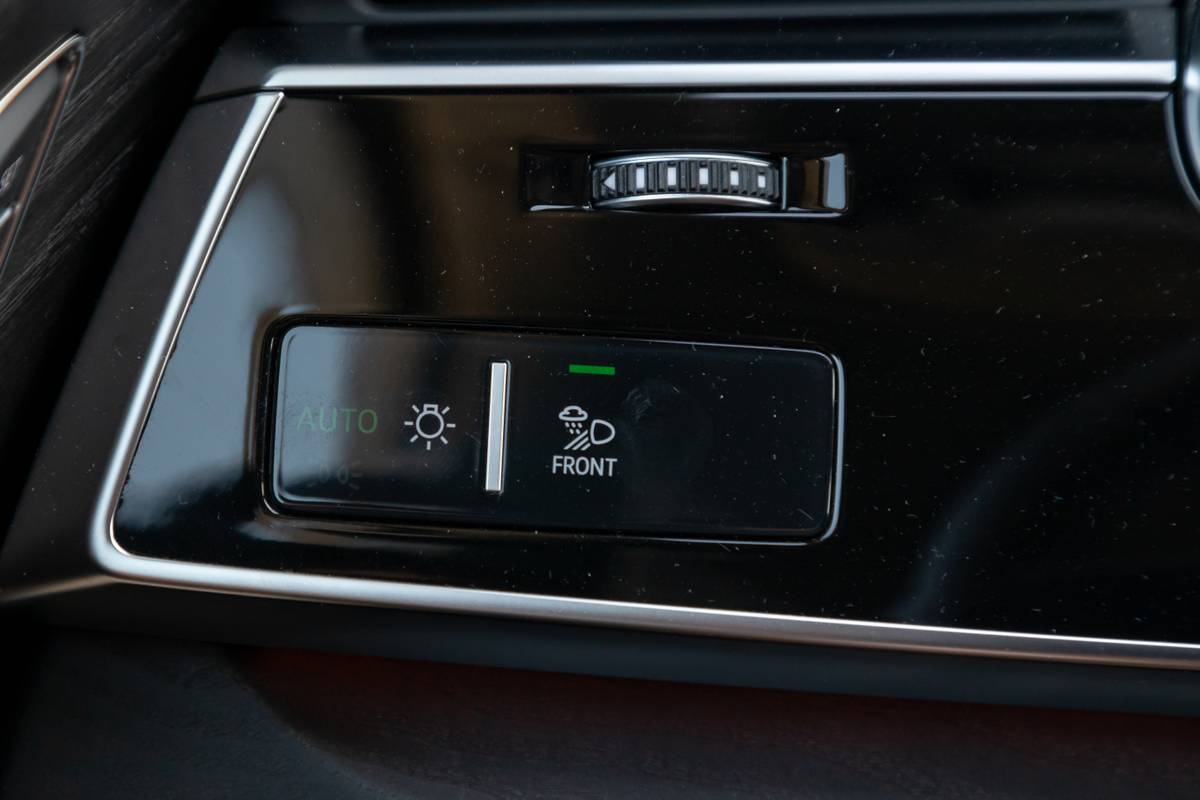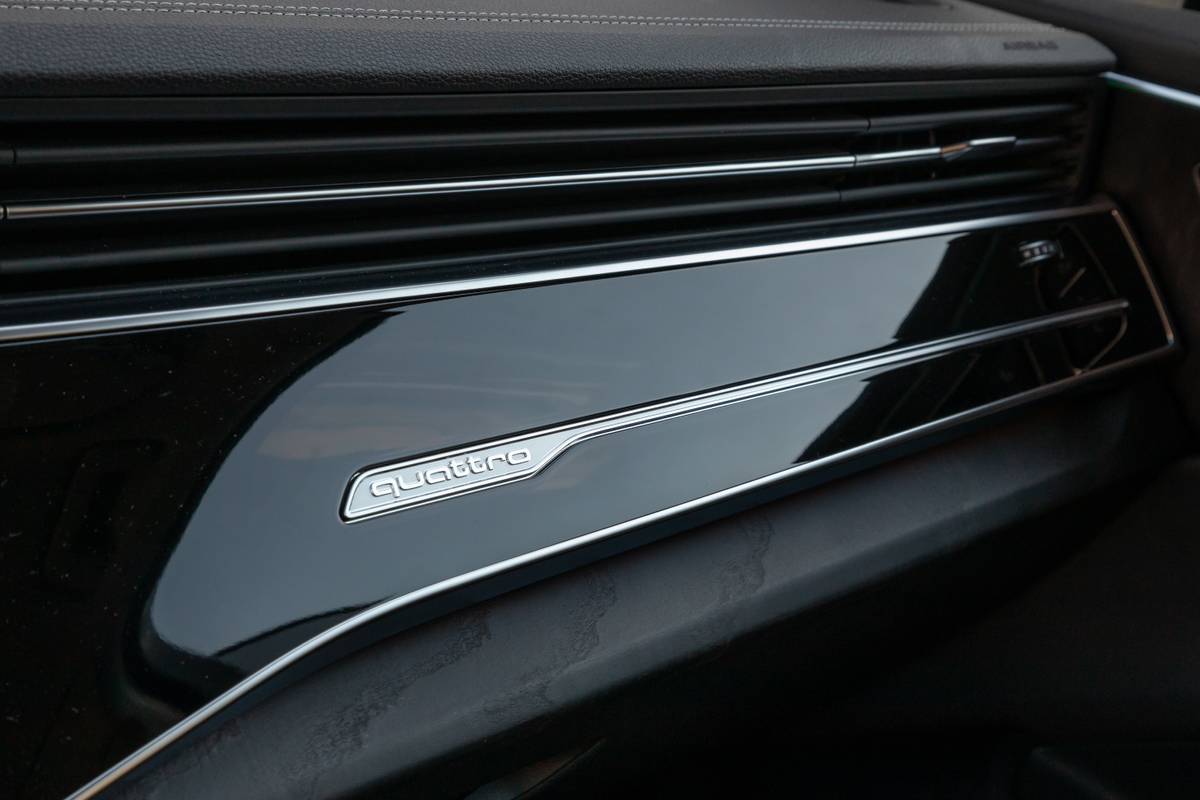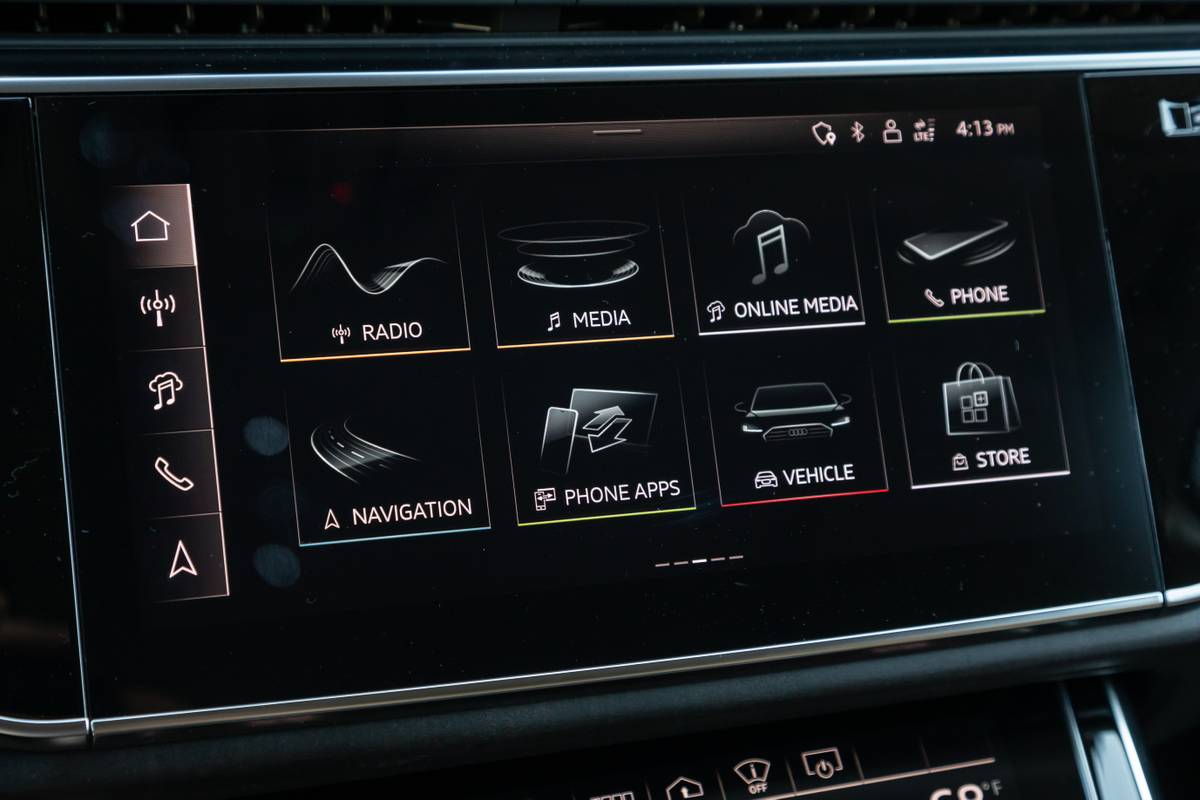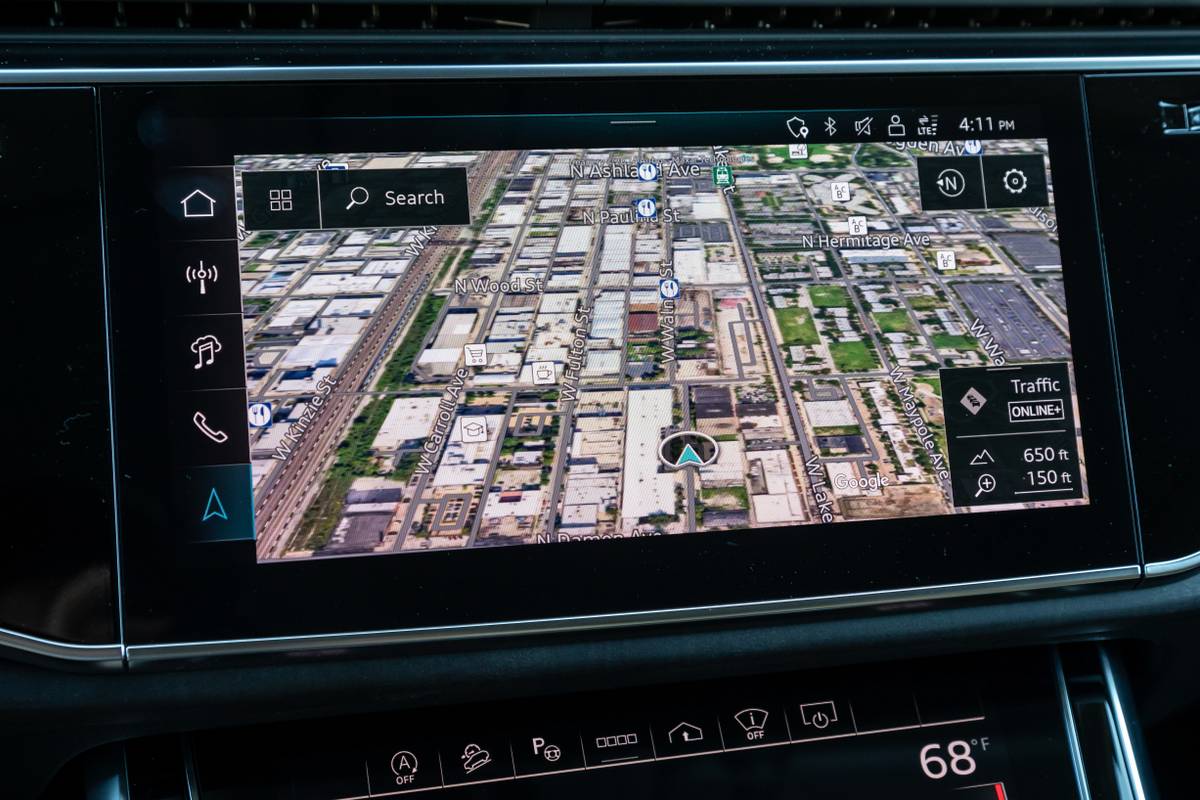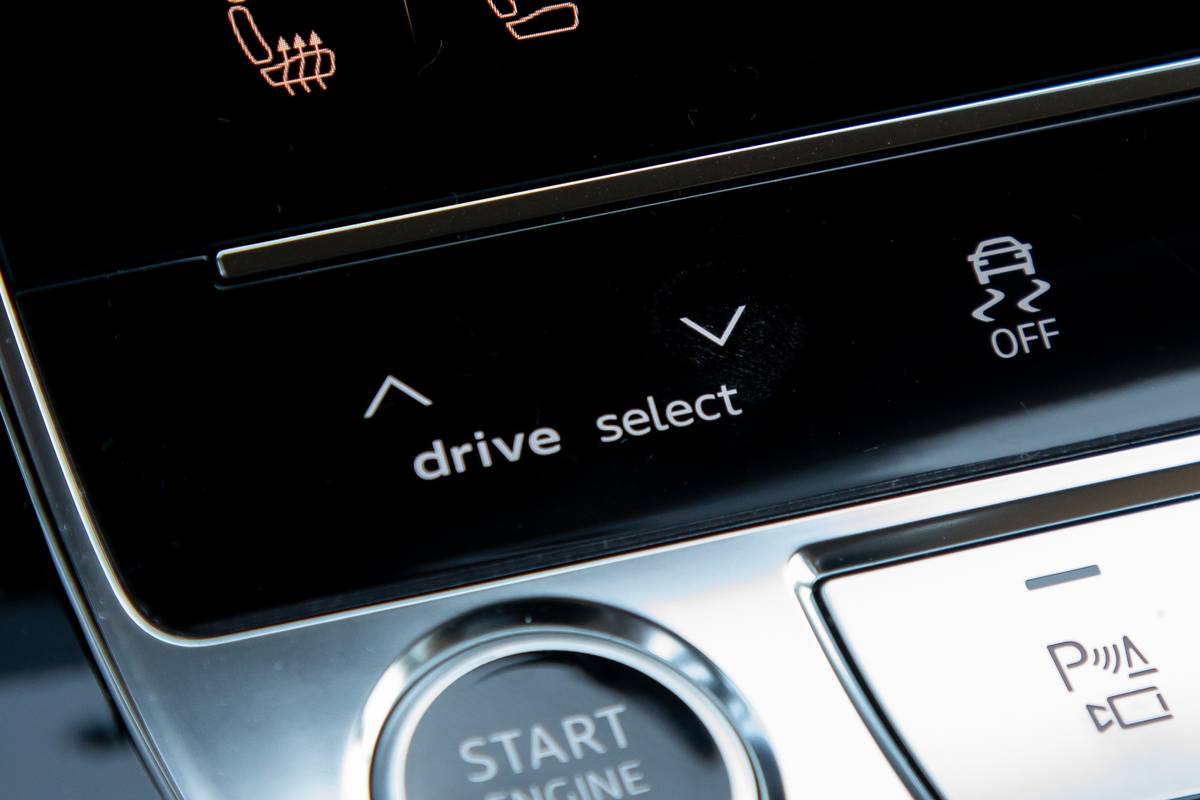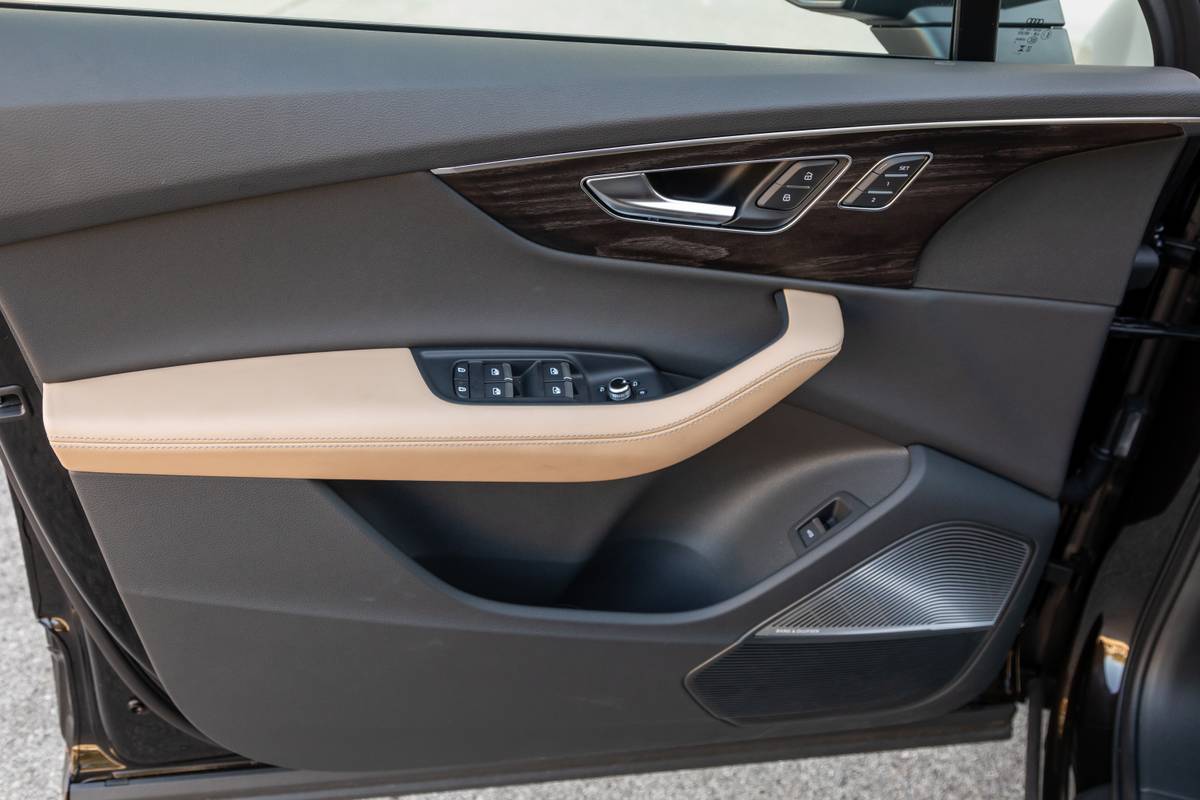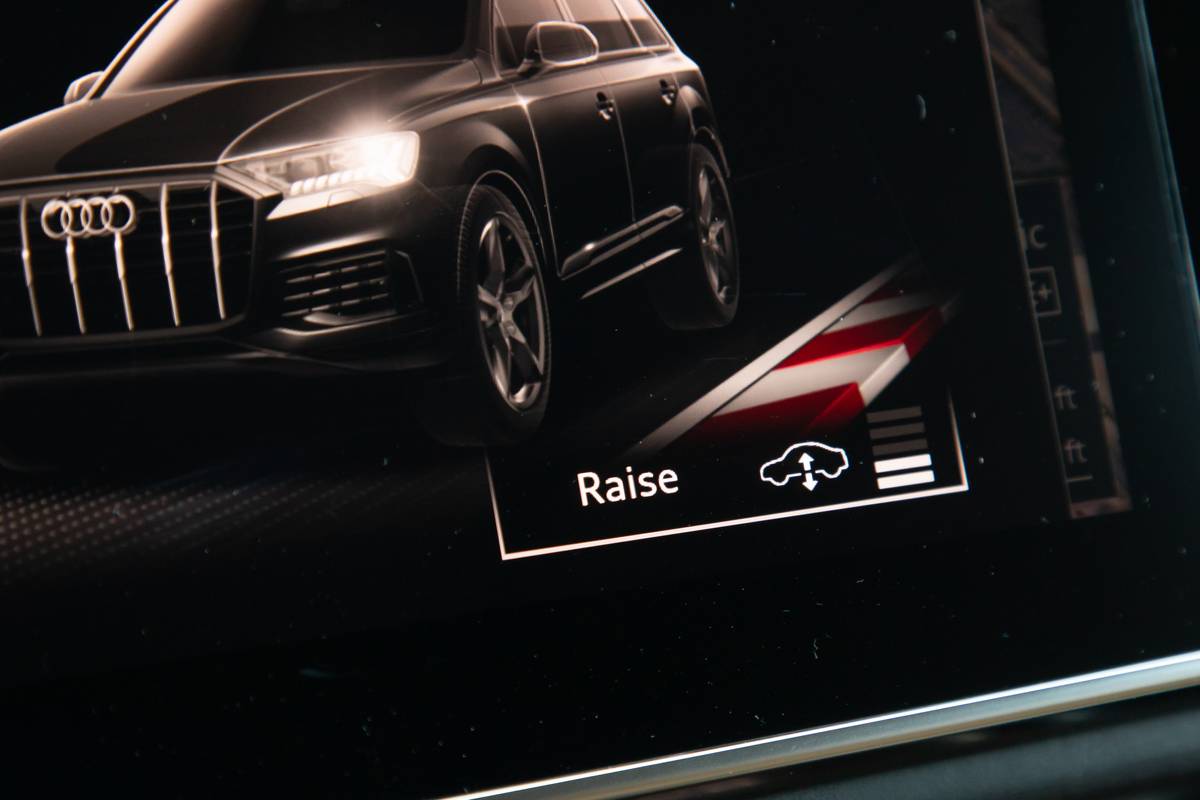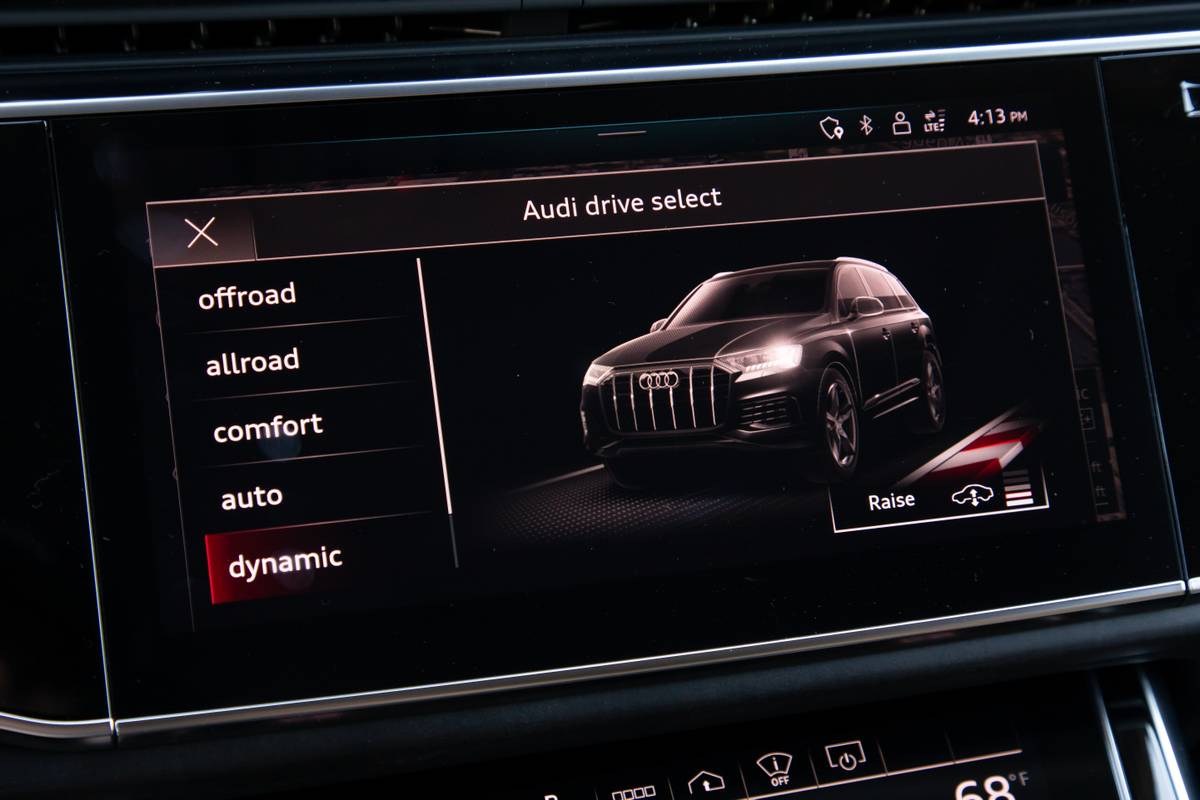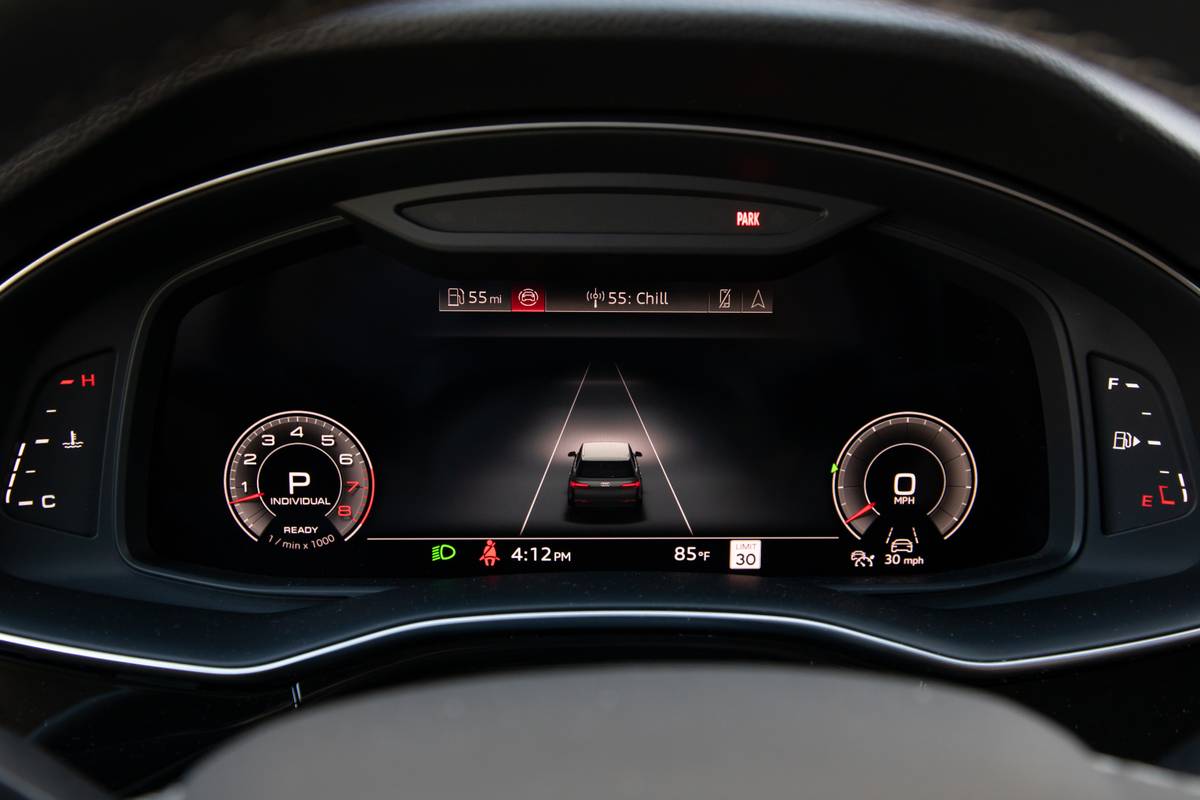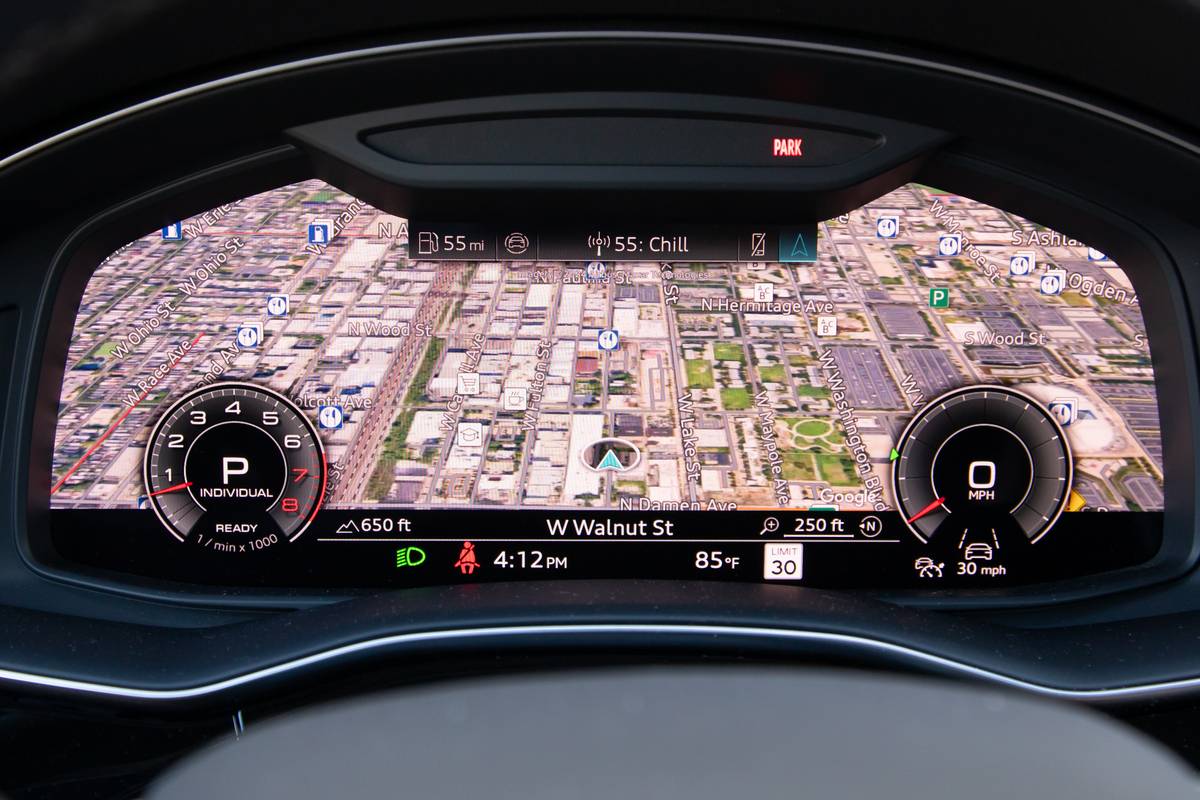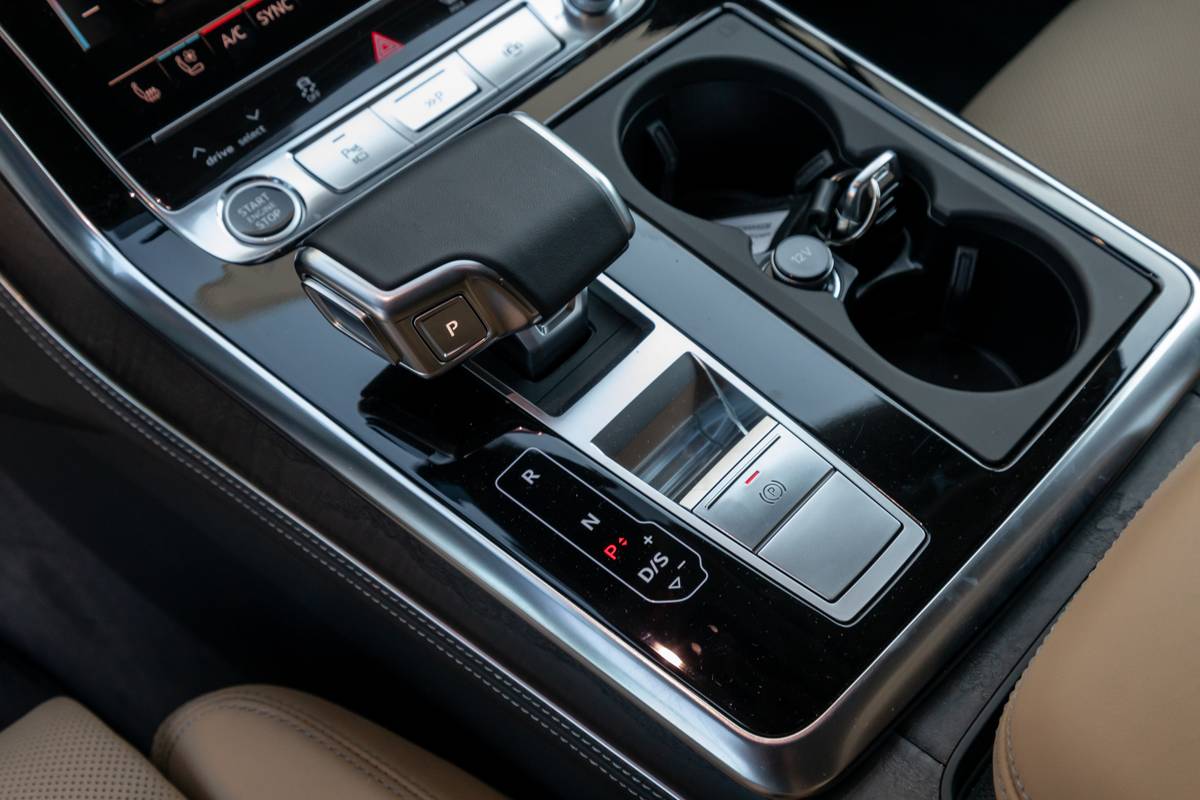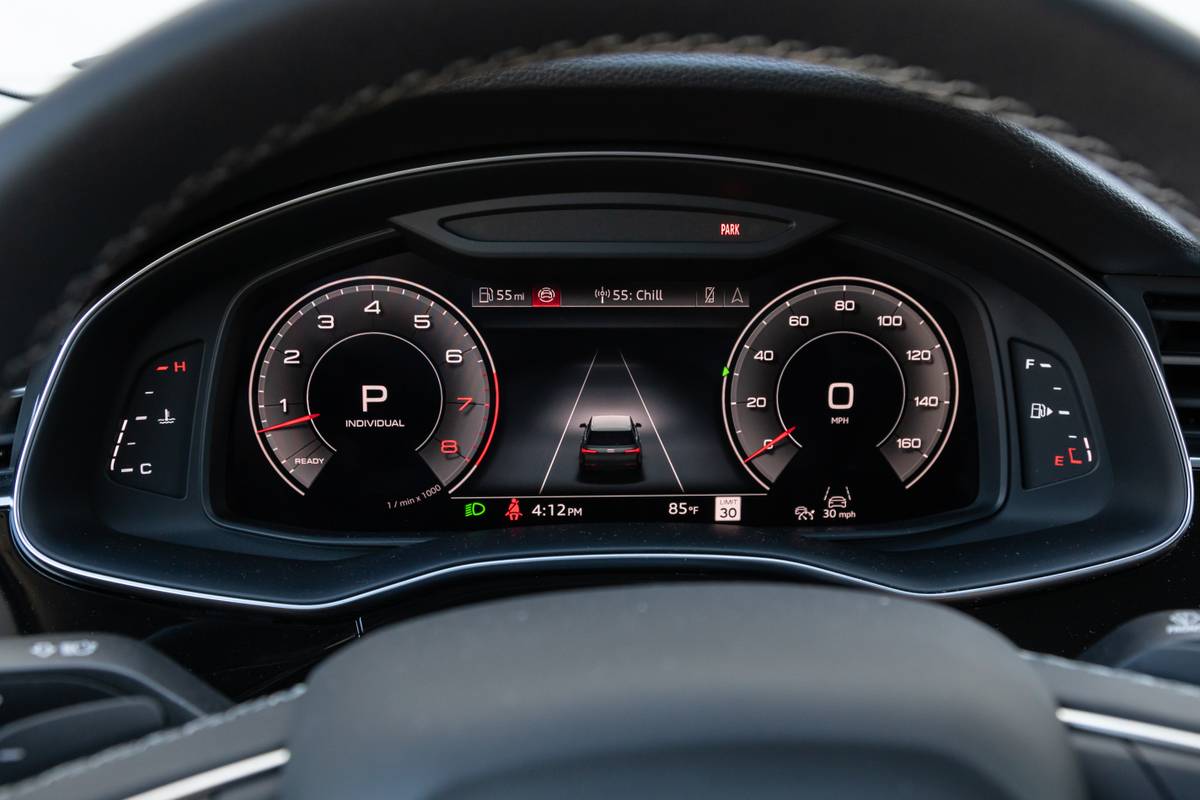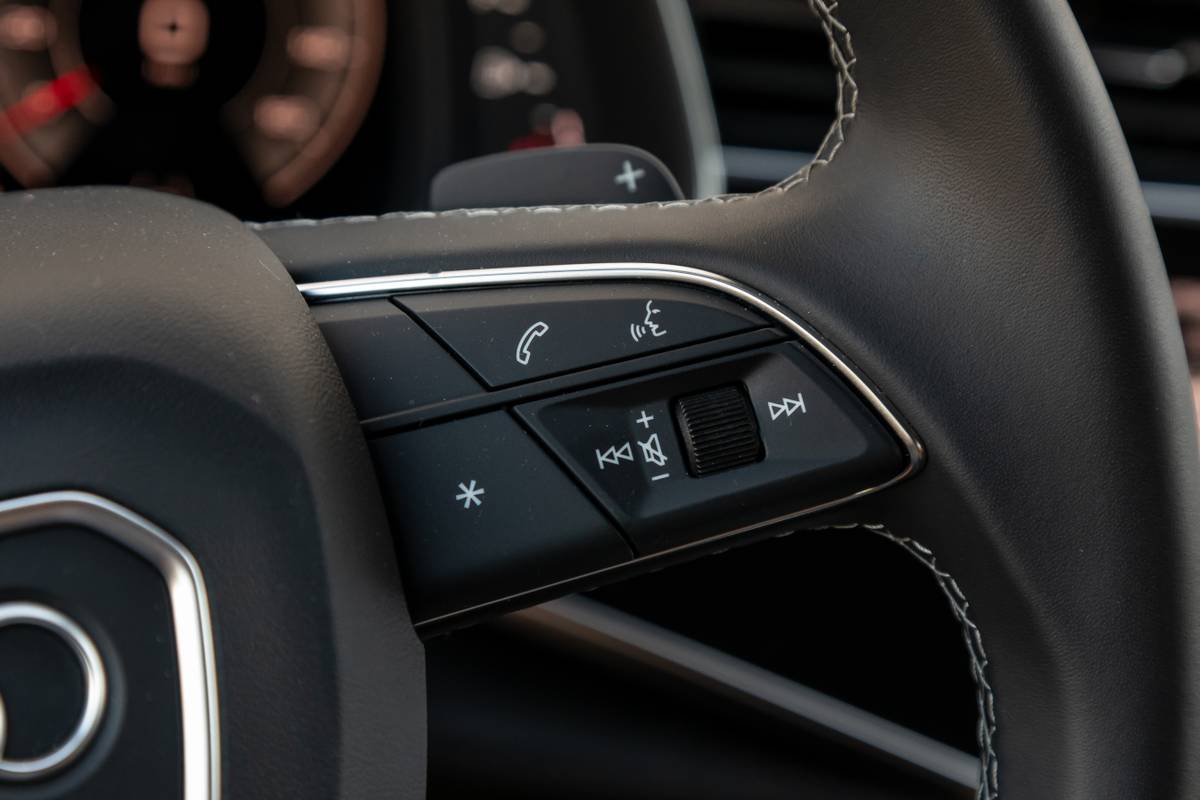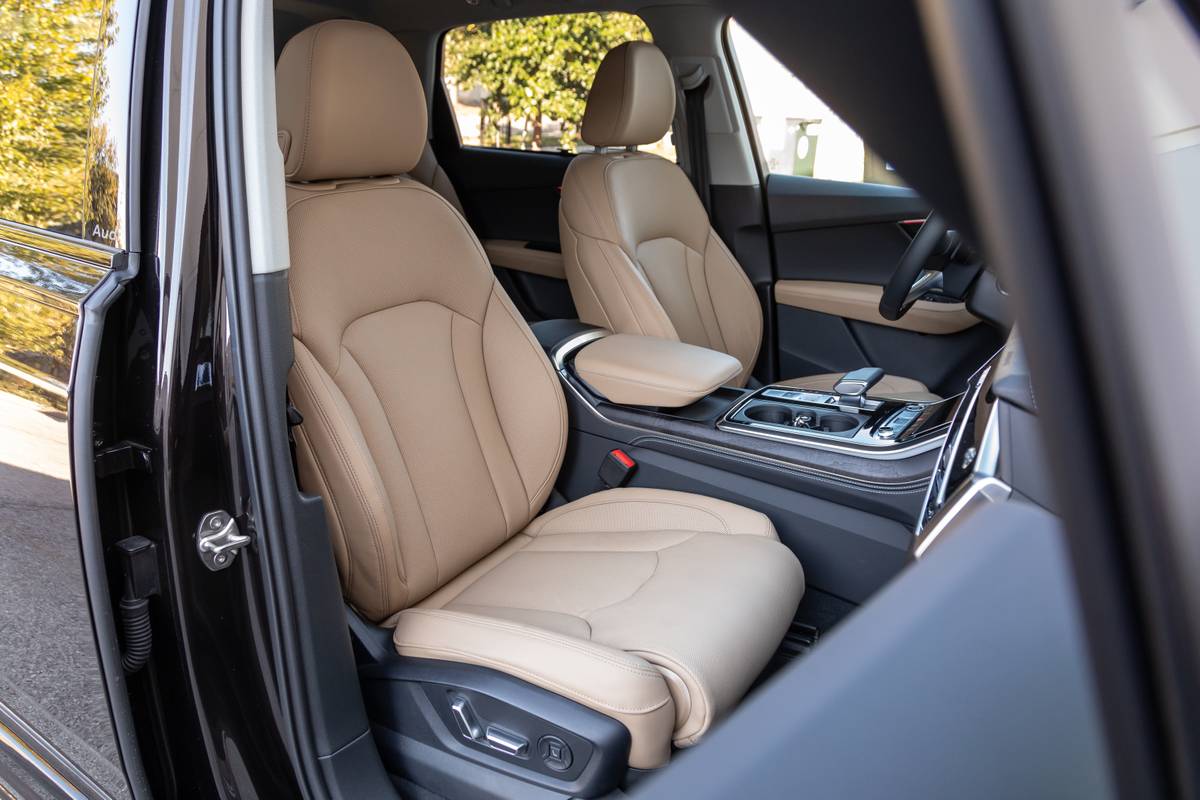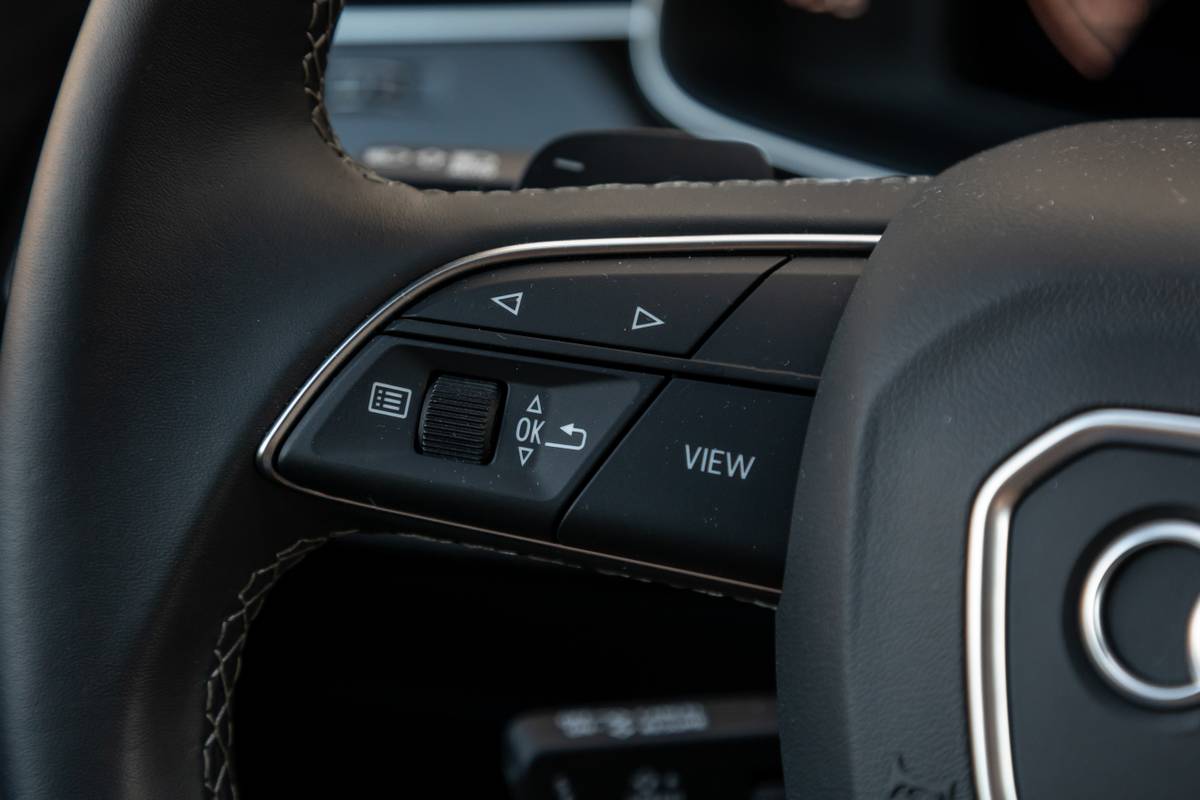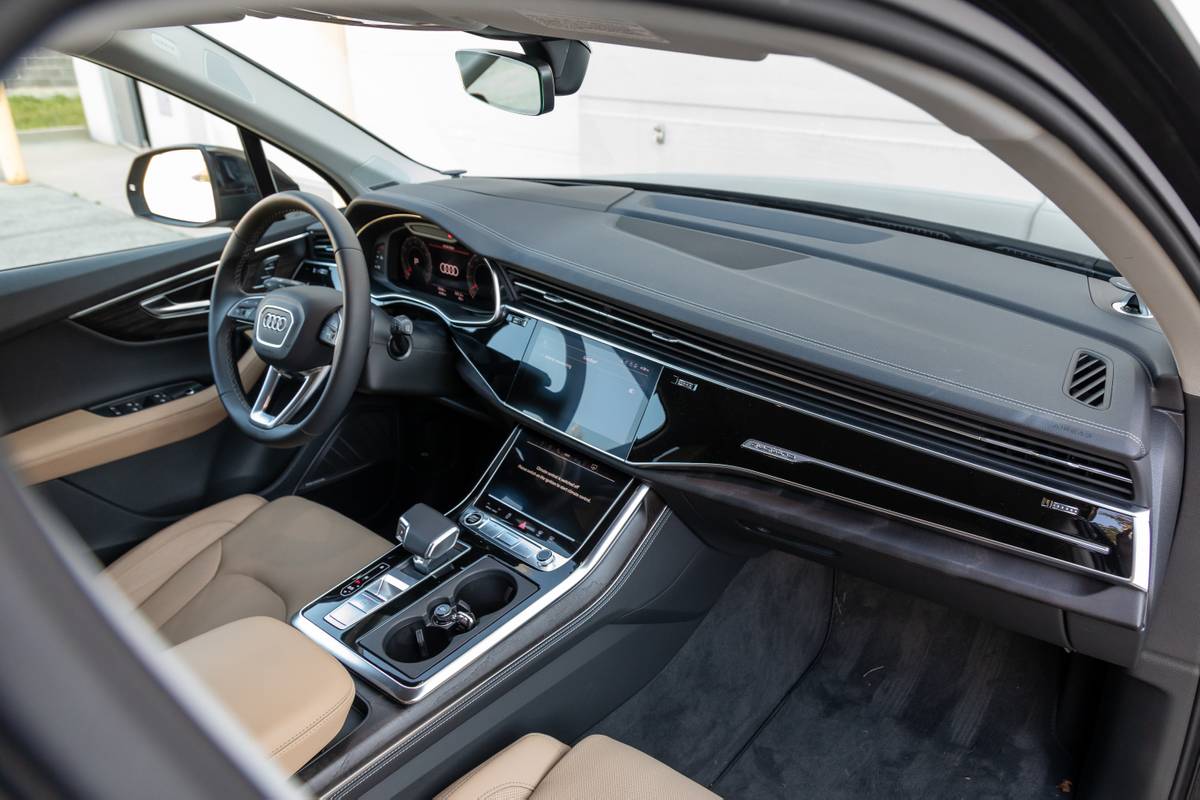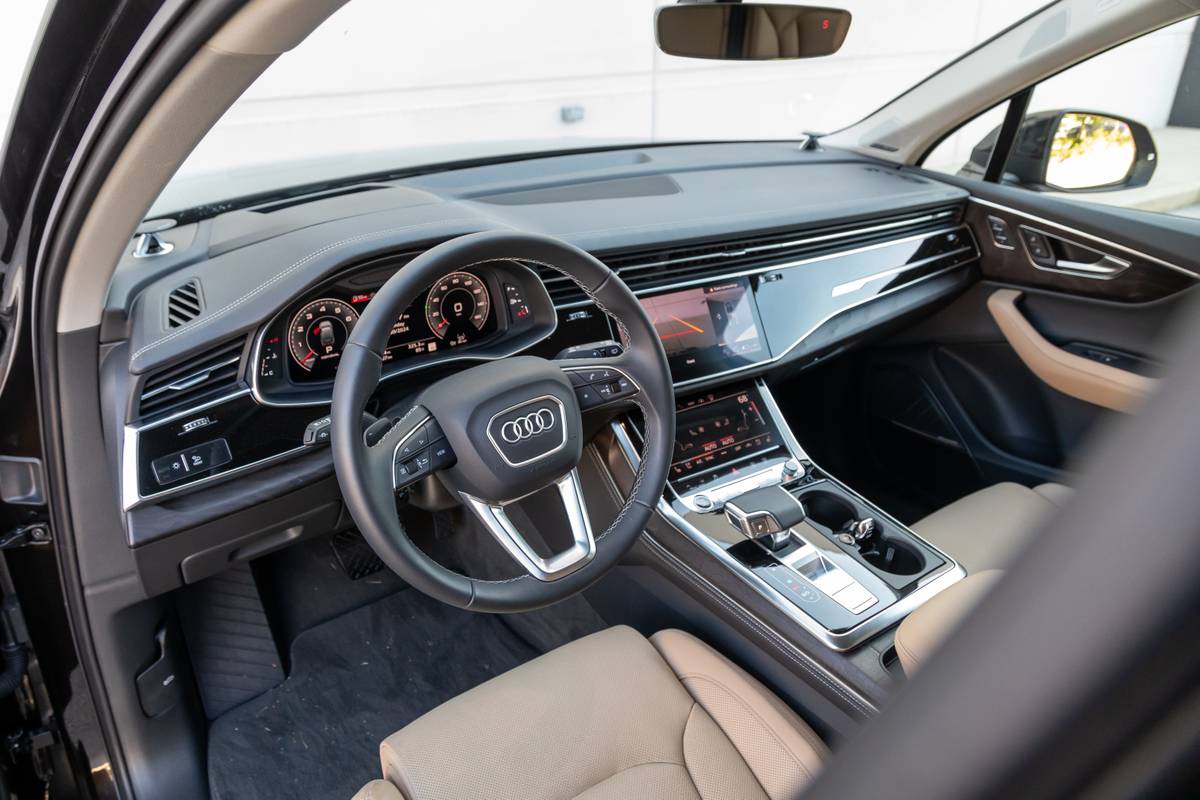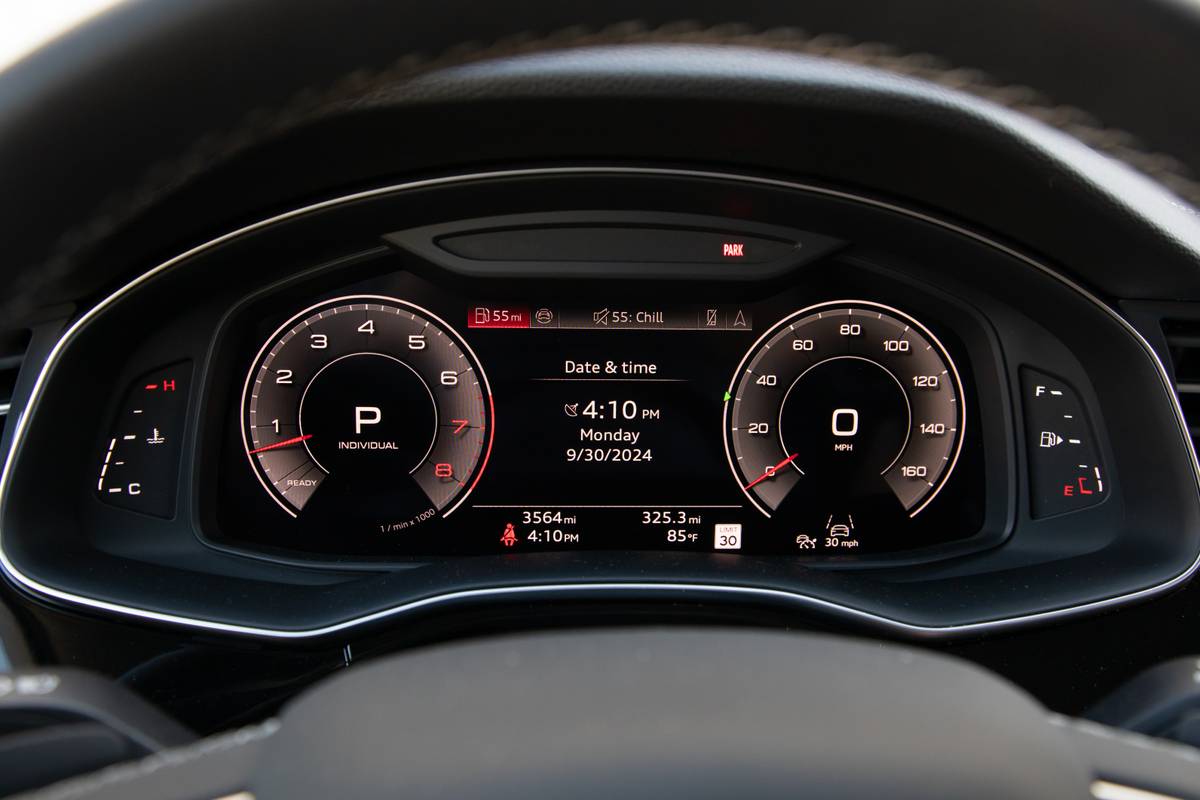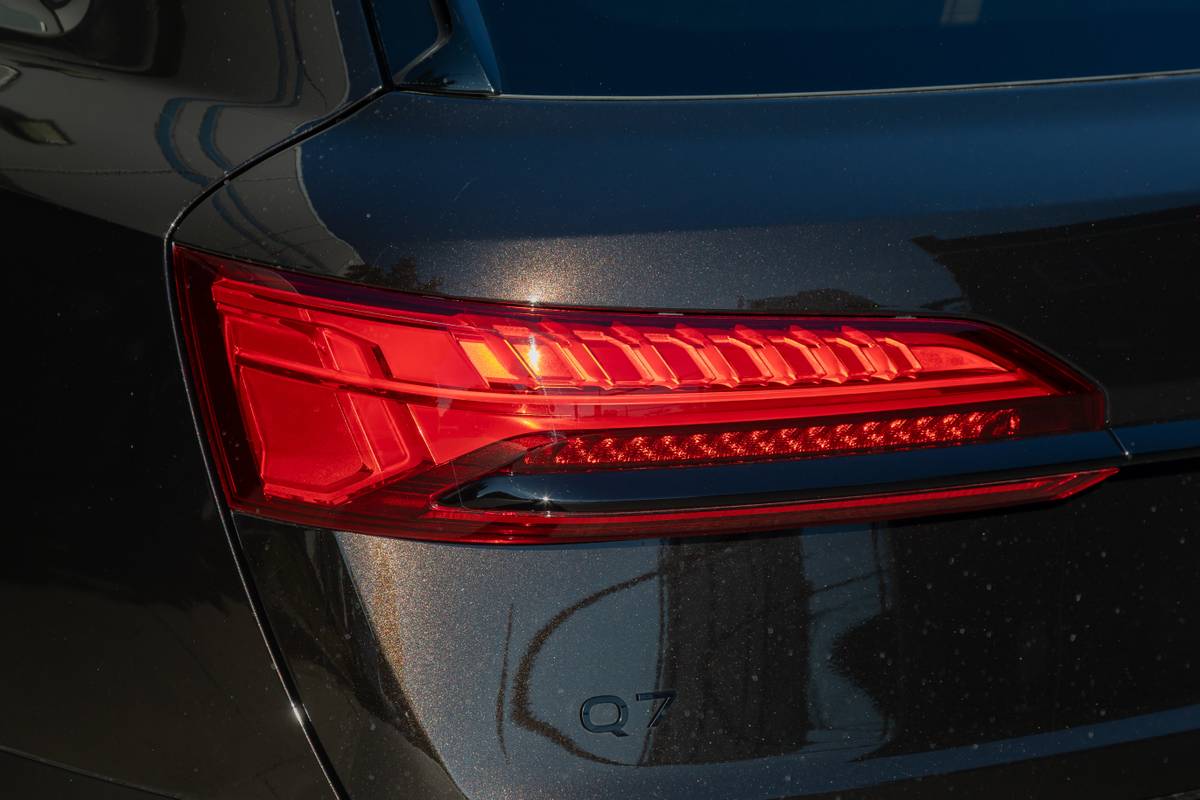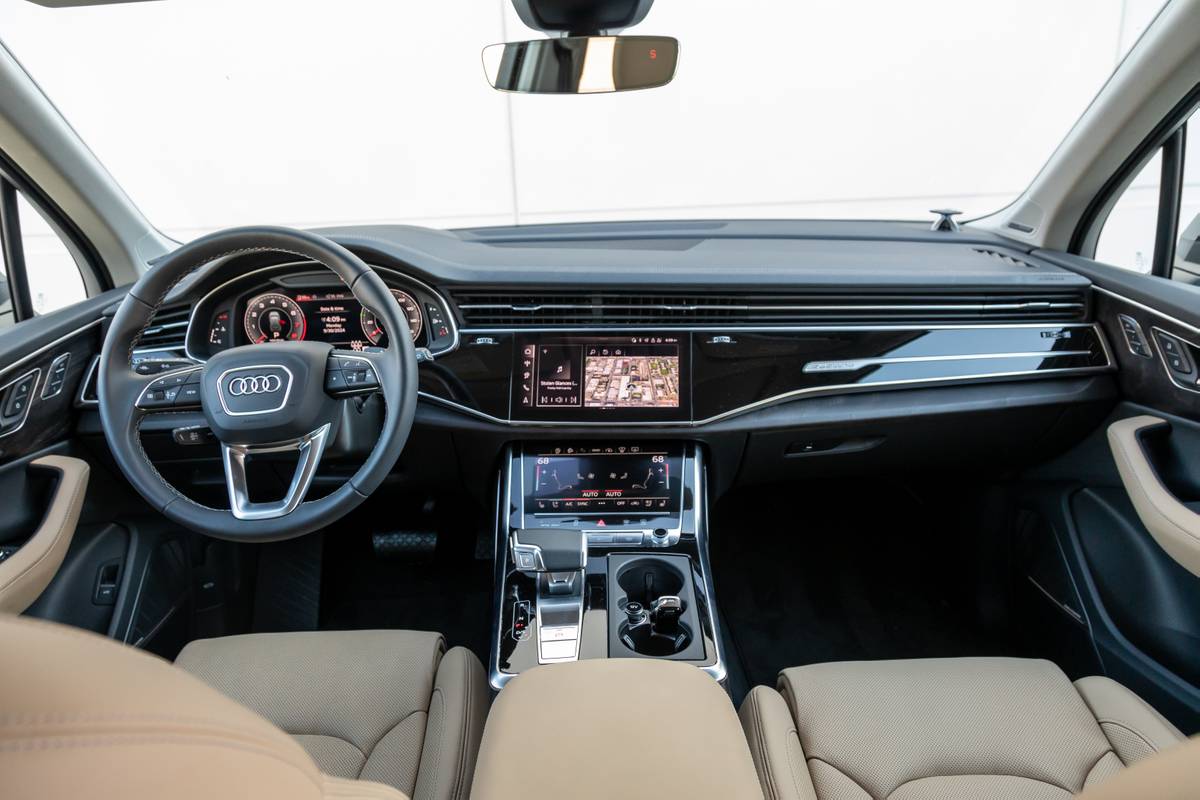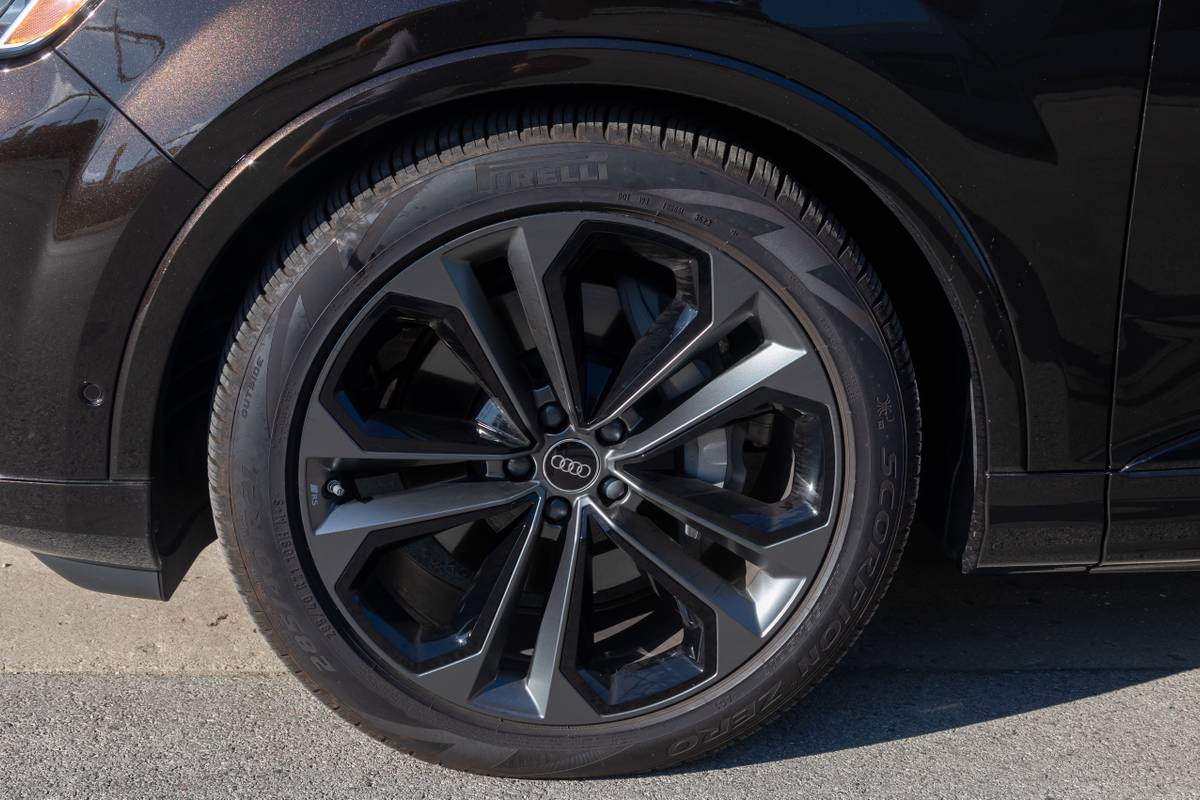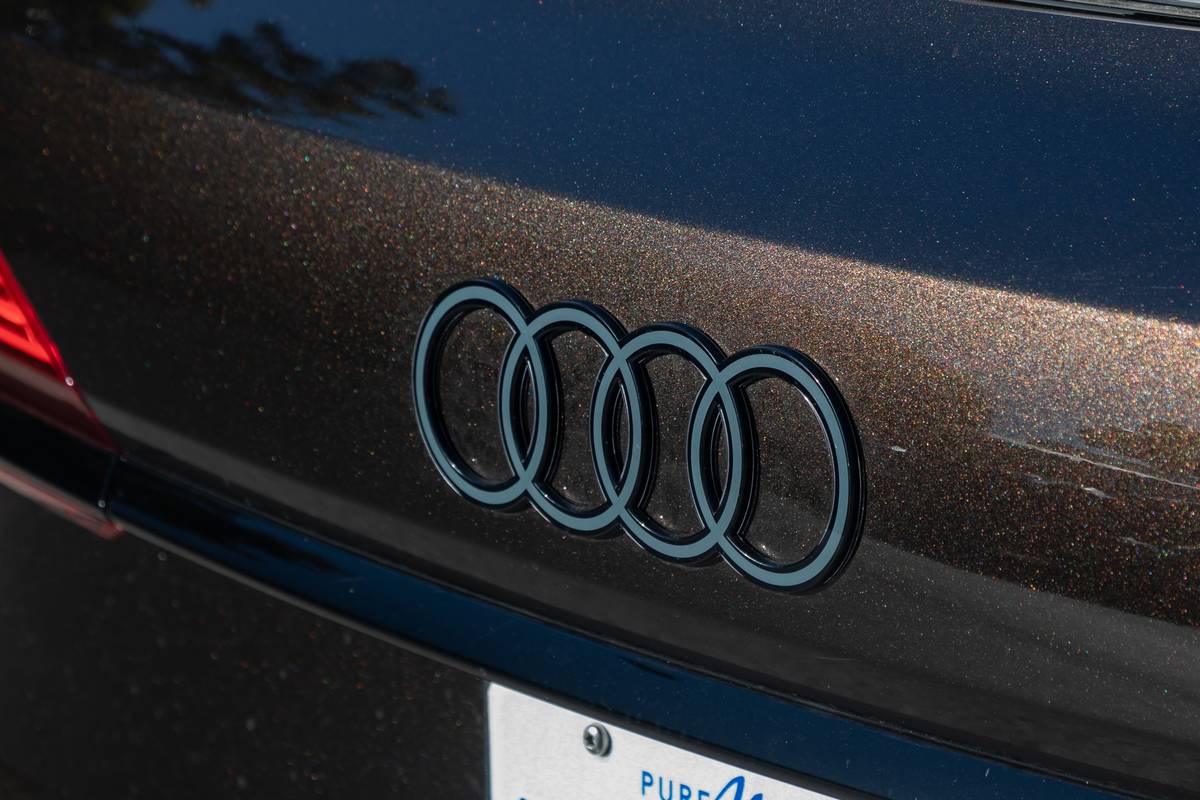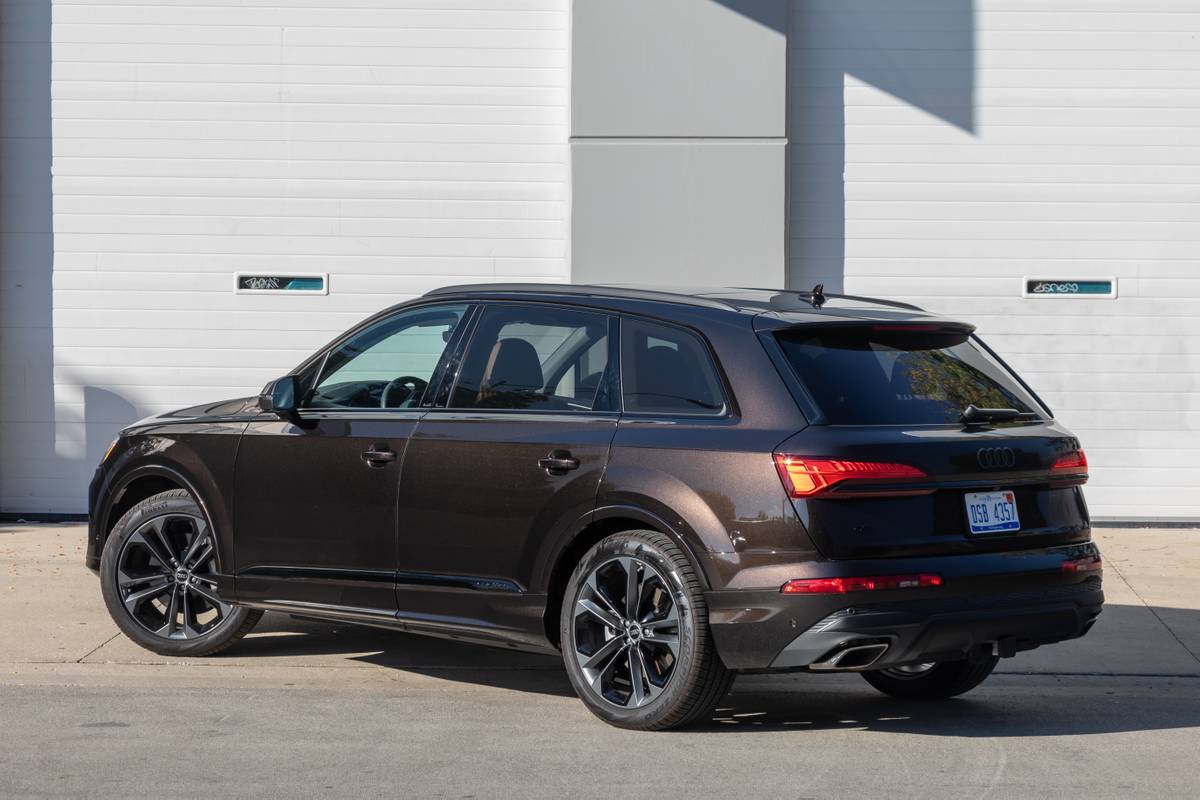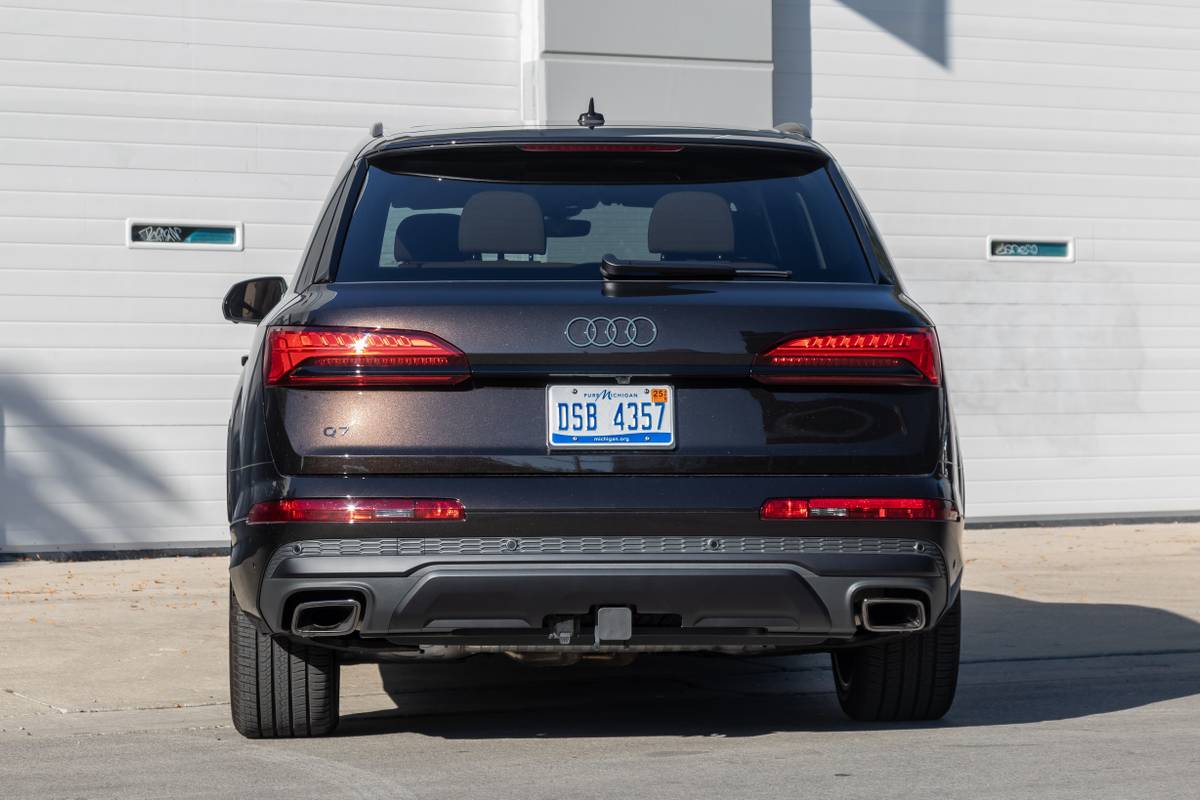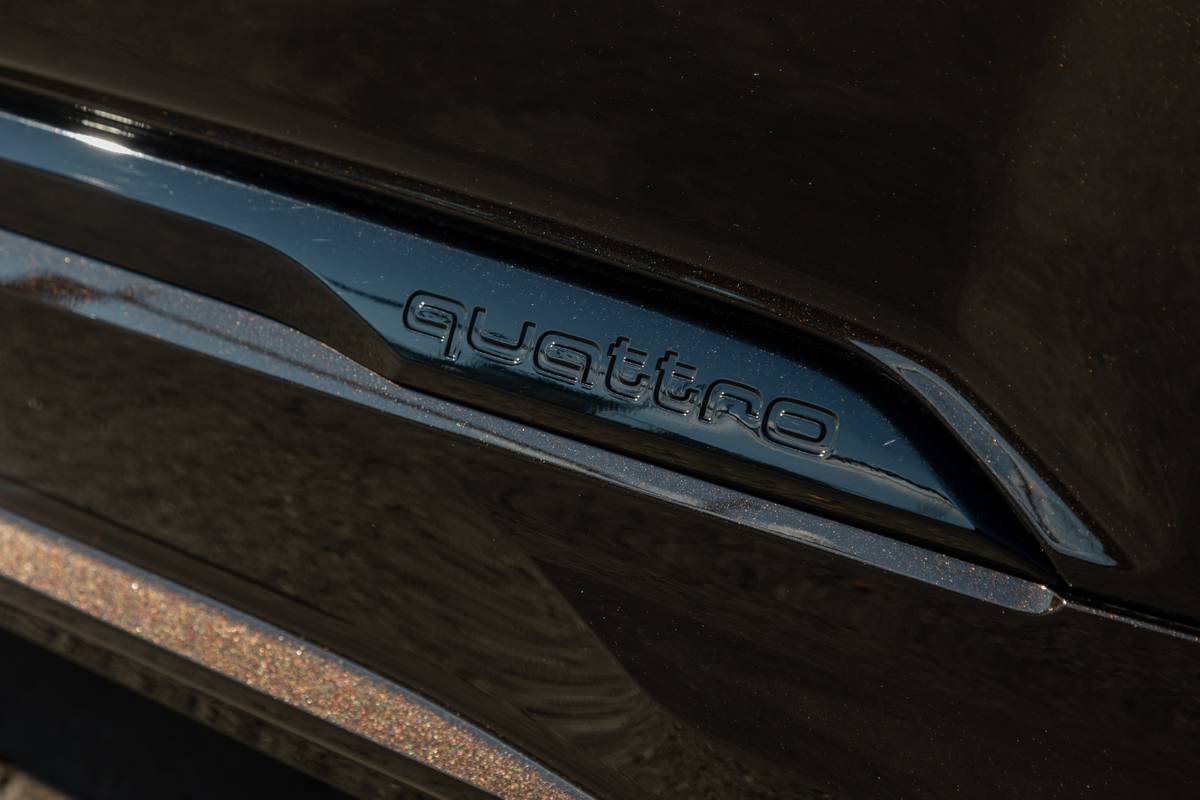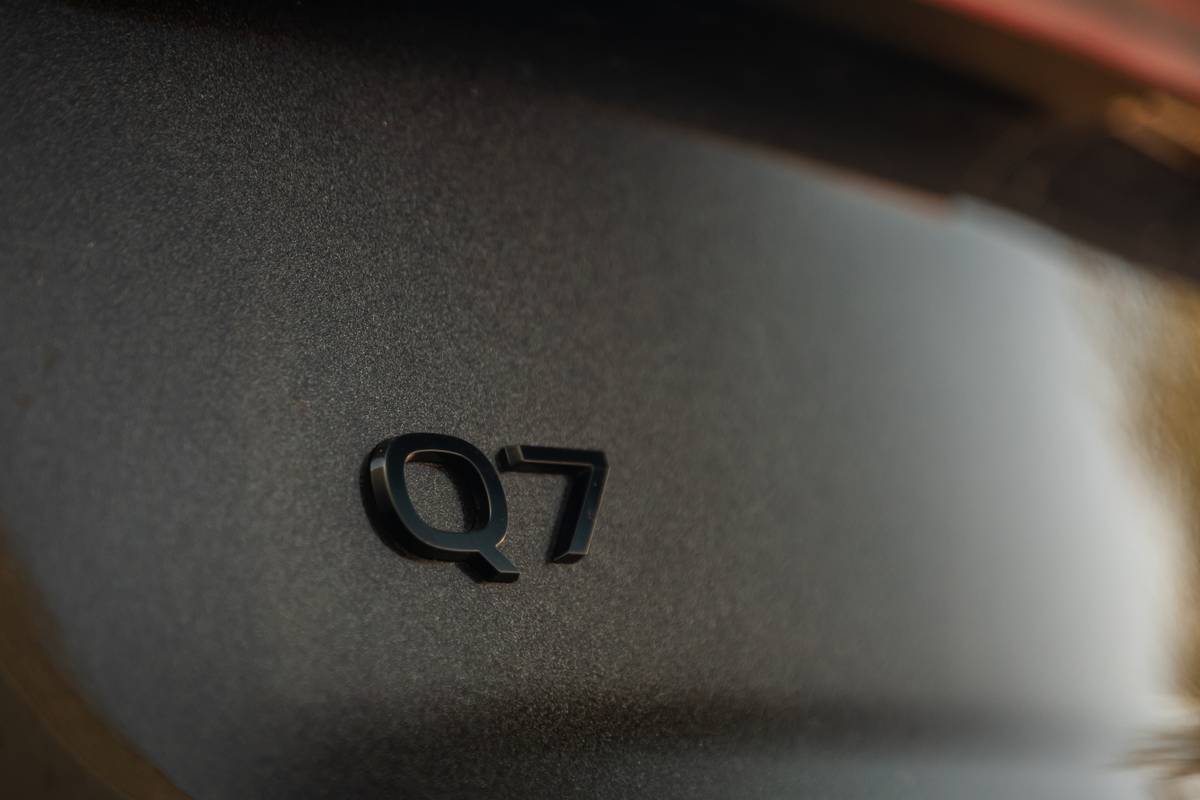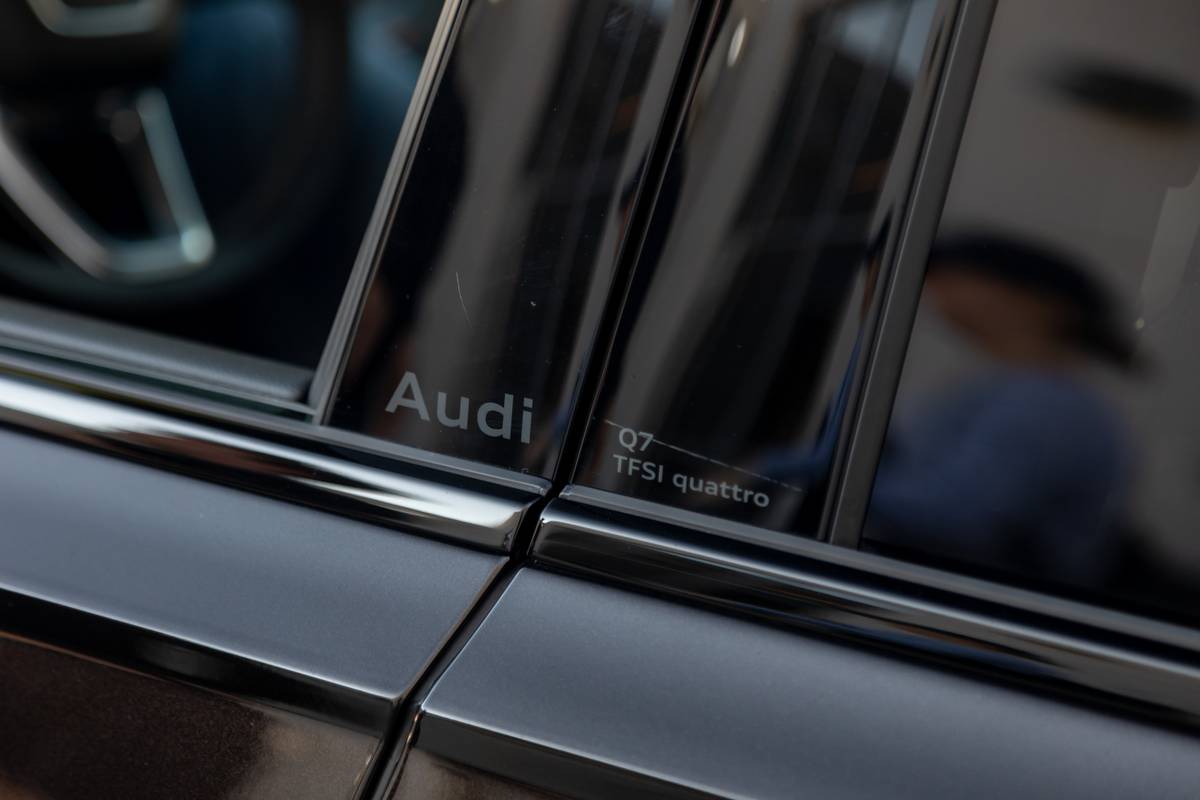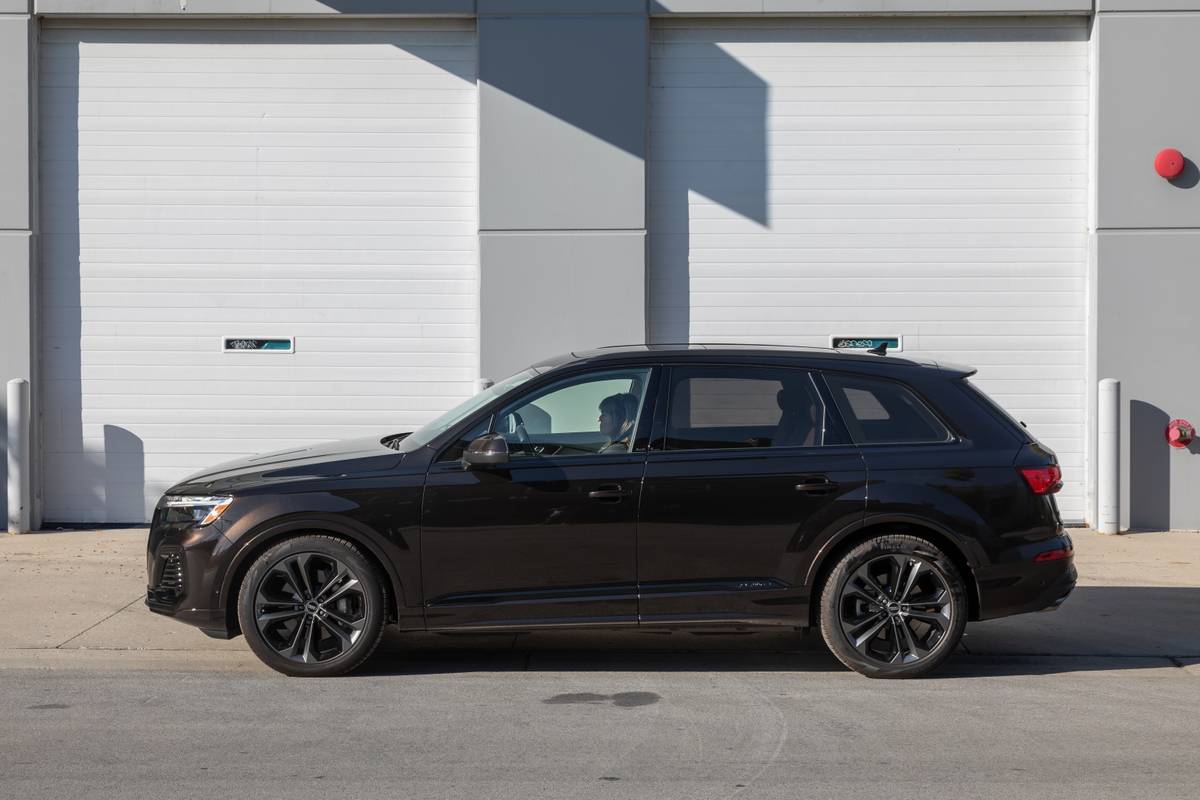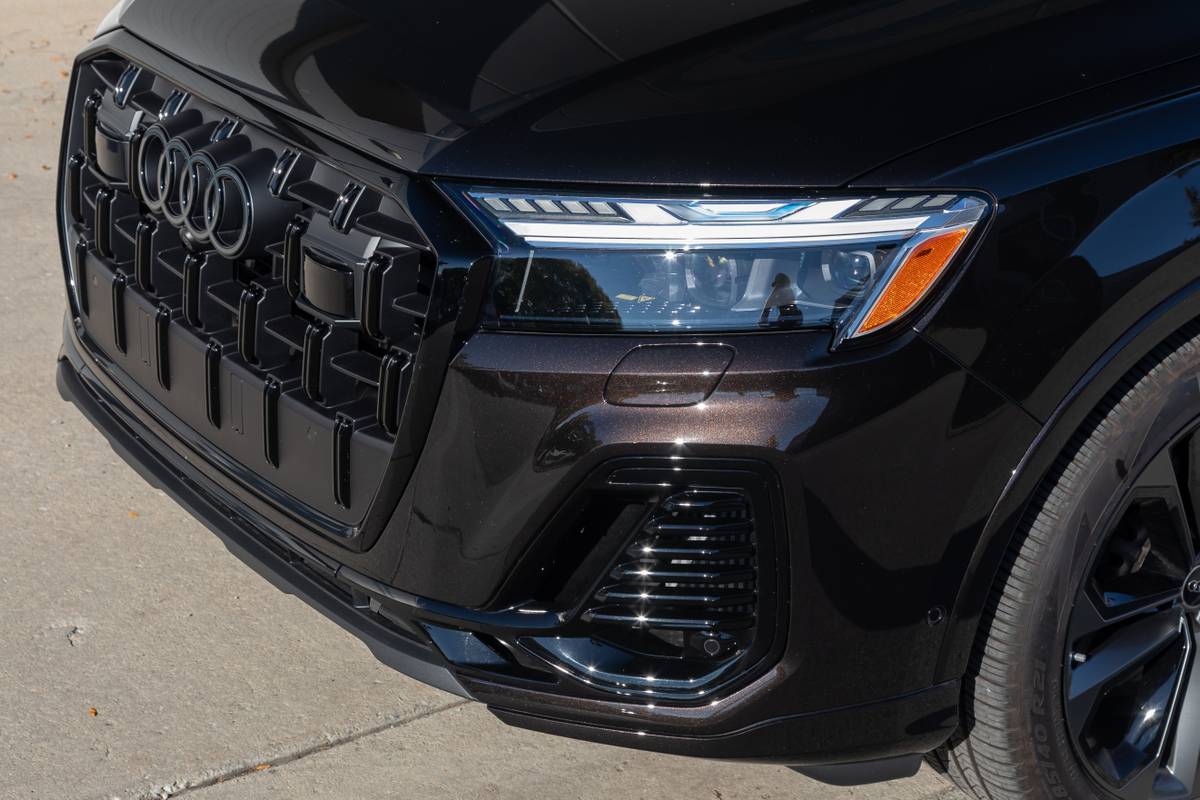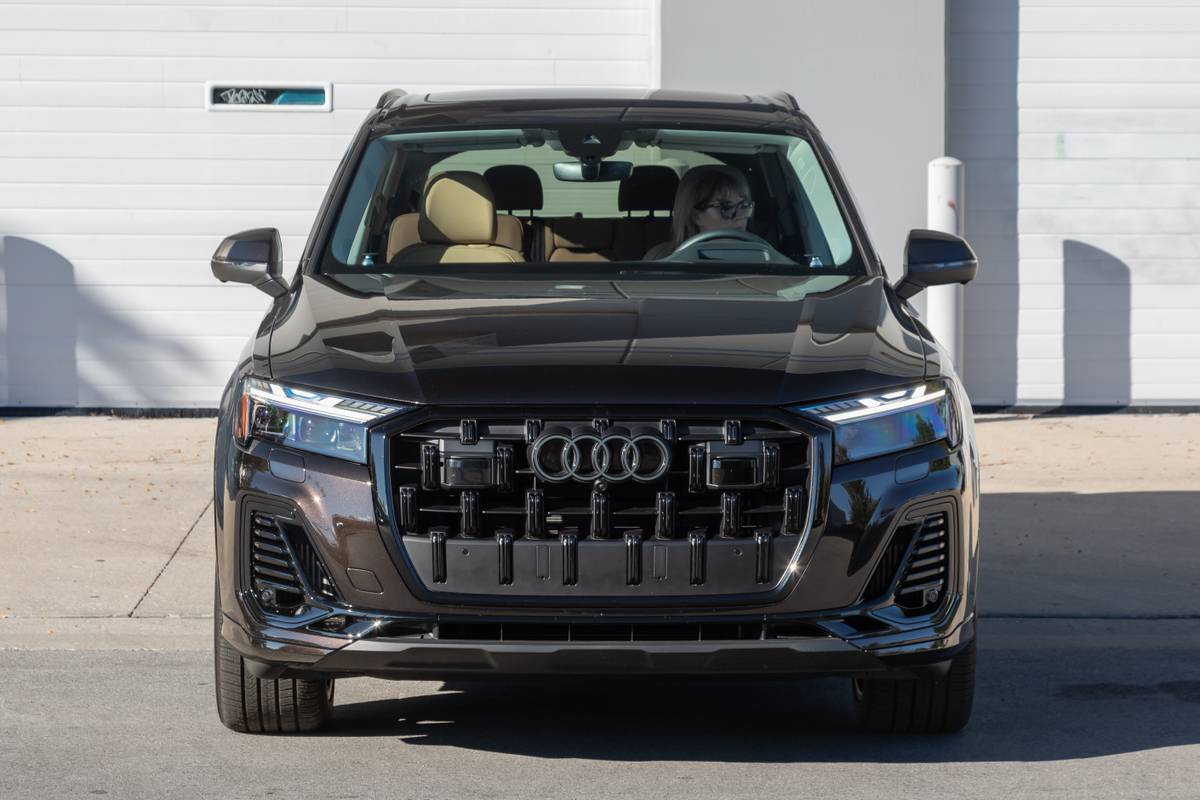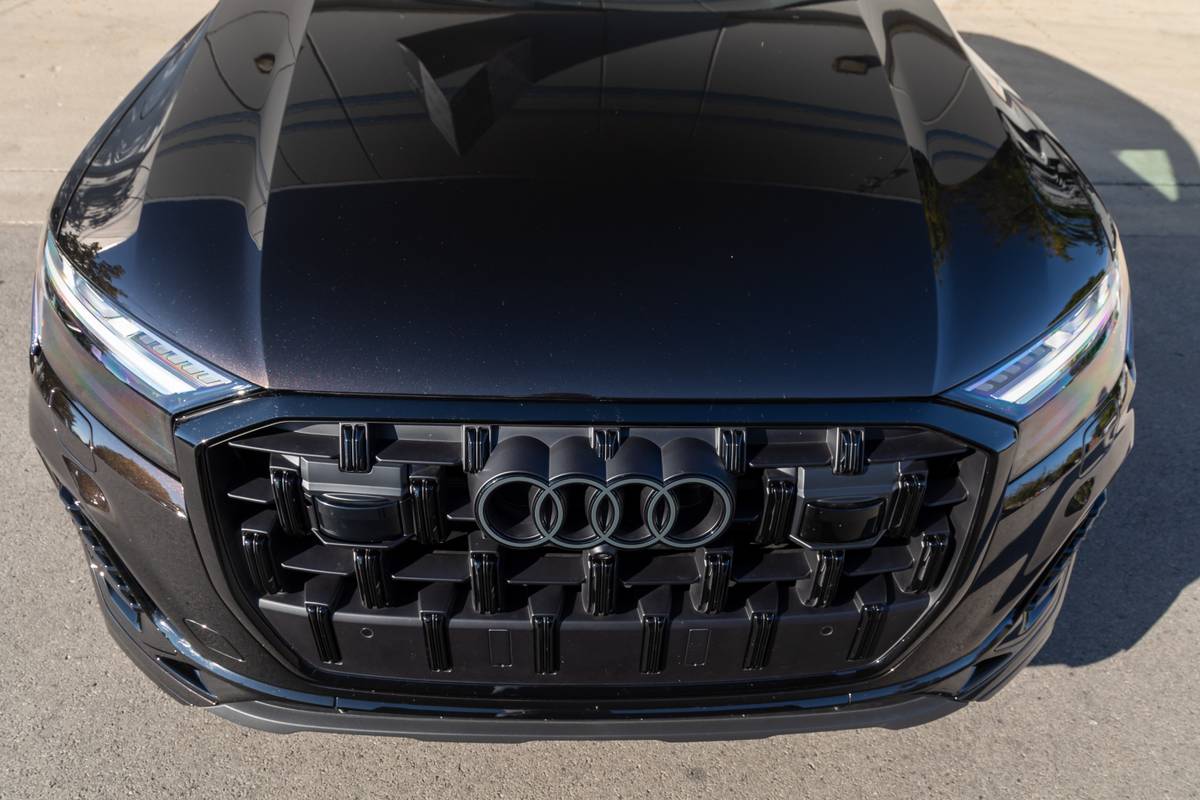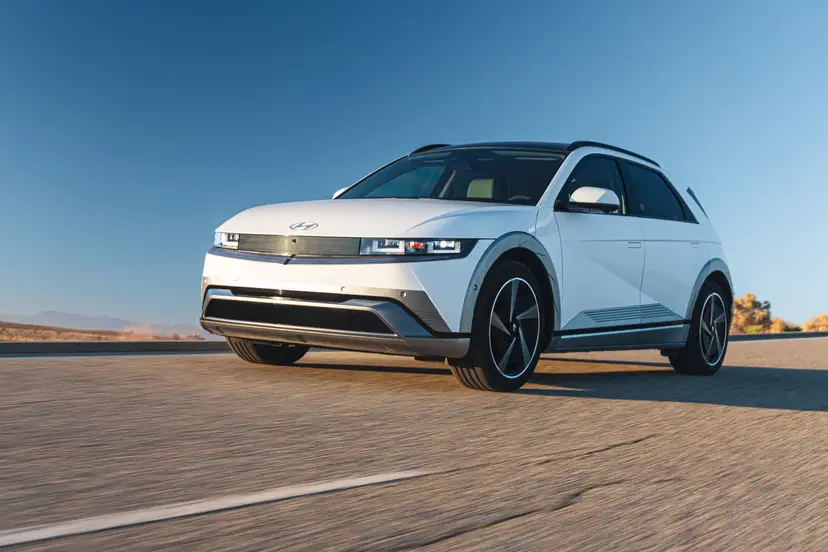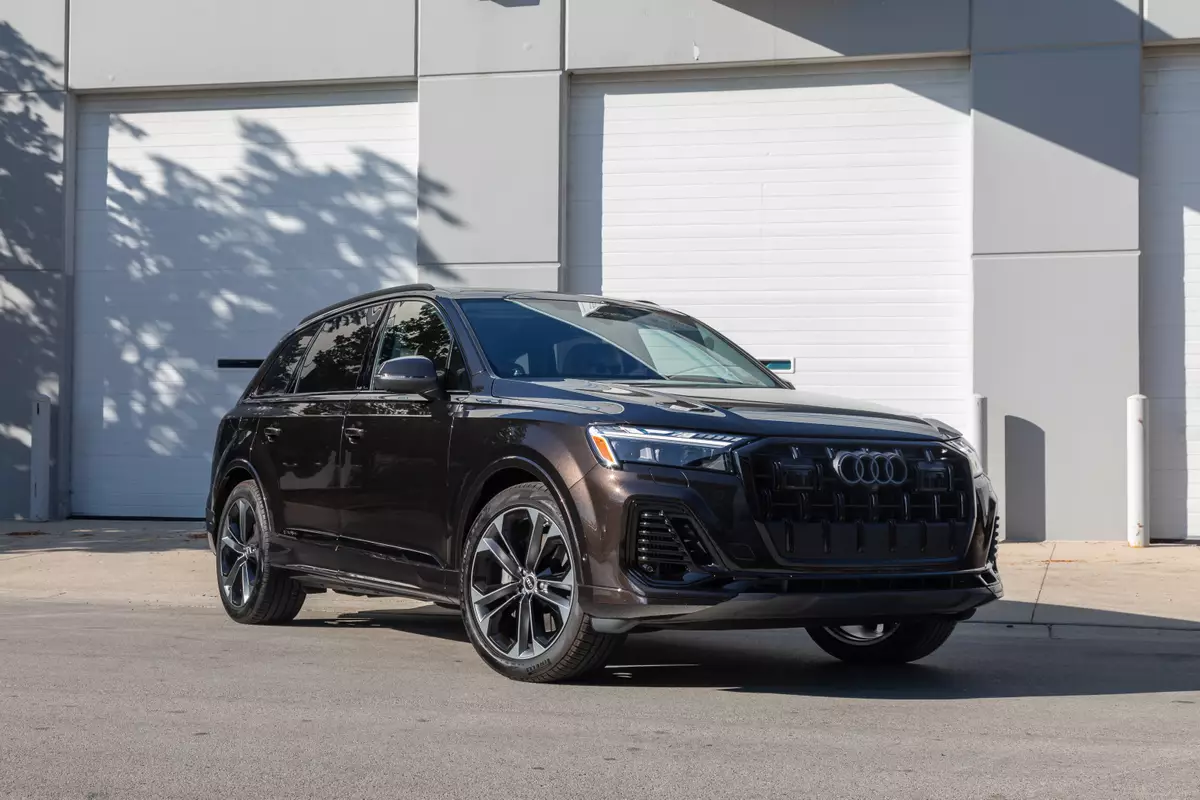
The verdict: The 2025 Audi Q7 three-row SUV delivers a rock-solid luxury experience and represents surprisingly solid value even at a very high price — but as a vehicle that hasn’t been fully redesigned since the 2017 model year, it also feels a bit dated.
Versus the competition: The Q7 is every bit as luxurious as the BMW X5 and Mercedes-Benz GLE, and while its technology may feel dated, it’s also far less frustrating to use. Its standard third row of seats also makes it the most family-friendly SUV in the bunch.
With its last redesign coming for the 2017 model year, Audi’s flagship Q7 is old in car years. For 2025, it gets a mildly updated look and … that’s about it. Its infotainment system also can now download apps directly to its interface, but doing so requires an Audi Connect Plus subscription plan. (And it still has wireless Apple CarPlay and Android Auto connectivity.) Apps in the infotainment system are a nice backup feature, but I’d like to meet the person who won’t connect their smartphone to their Audi but will log into Spotify directly through the car. I bet they have some interesting views.
Related: Fresh Face, Apps Aplenty: 2025 Audi Q7 Priced from $61,695
For this review, we drove a 2025 Audi Q7 Prestige model to see if the SUV has fallen too far behind its competition or if it might actually represent a decent value — even at an as-tested price of $88,790 (including destination).
Old-School and Silky Smooth
Driving the Q7 is an exercise in smoothness. While there can be some initial lag when accelerating from a stop, the optional turbocharged 3.0-liter V-6 — Audi designates it the 55 TFSI — feels adequately powerful. The engine makes 335 horsepower and 369 pounds-feet of torque, and while those aren’t eye-watering numbers, the Q7 hustles along smoothly and brilliantly. I never felt disappointed or wanting for more during my time behind the wheel, but for shoppers who do, Audi also makes the sportier SQ7.
The Q7’s eight-speed automatic transmission pairs well with the V-6; it hesitates slightly in full-throttle passing maneuvers, downshifting most of the way in an initial effort before finishing the job with a second downshift. It’s otherwise well behaved and good at finding the right gear for a quiet ride.
For a nice party trick, the V-6 Q7 is rated to tow up to 7,700 pounds with an optional towing package, which adds a hitch receiver and seven-pin wiring plug for connecting a trailer. While Q7 buyers don’t strike me as the kind of people who tow frequently, it’s a nice-to-have feature. At that weight, though, I’d want to have a trailer brake controller to keep everything under control, and the Q7 doesn’t include one as standard or optional equipment in the traditional sense, though you can find one — and pretty much anything else you need to safely tow — in Audi’s accessories catalog.
While the Q7’s V-6 is excellent, it’s also why this SUV feels a bit behind the times: The Q7 lacks the power or efficiency (or both) of notable competitors. While the EPA rates the Q7’s V-6 at 18/23/20 mpg city/highway/combined, the 2025 BMW X5 xDrive40i and its turbocharged inline-six-cylinder is rated at 23/27/25 mpg and makes 375 hp and 398 pounds-feet of torque. The all-wheel-drive 2025 Mercedes-Benz GLE450 isn’t quite as efficient at 19/25/21 mpg, but it also offers up to 395 hp and 517 pounds-feet when its boost mode is engaged. The 2025 Volvo XC90 B6 with AWD is also more efficient than the Audi, at 20/26/23 mpg, though its powertrain only makes 295 hp and 310 pounds-feet.
All three of those competitors use mild-hybrid technology to increase efficiency and performance, and all three also offer a plug-in hybrid variant for even greater efficiency and a short all-electric driving range. Audi hasn’t gone in that direction yet here in the U.S., and it likely won’t until the Q7 gets a full redesign. Again, the Q7’s turbo V-6 is a great engine and well suited to this SUV, it’s just thirstier and less powerful than some of its competitors’ powertrains.
Related Video:
We cannot generate a video preview.
Quiet, Comfortable and Not Too Futuristic
What I like so much about the Q7 goes well beyond its powertrain. The cabin is a comfortable (at least in the first two rows of seats) and, most important, quiet place to be. With the available Prestige Package, buyers also get dual-pane glass on the side windows. Even with its most powerful engine, the Q7 is the quietest car I’ve driven this side of an all-electric vehicle in a long time.
“Cushy” is a good way to describe the adaptive air suspension that comes with the Prestige Package. It absorbs bumps and imperfections, keeping the worst the road offers from transmitting into the cabin — even with my test vehicle’s optional 21-inch wheels and tires. The air suspension also does an excellent job controlling body movement in corners. The aim is not to carve up a canyon, but to keep occupants comfortable, and it does this job well. Optional four-wheel steering also adds a level of nimbleness that makes the Q7 easy to maneuver, ensuring navigating a crowded parking lot is as low-stress as possible.
Materials and build quality are also top-notch; while I found my test vehicle’s Saiga beige interior a bit busy visually, with multiple colors and trim materials, it felt nice to the touch. Quality doesn’t dip in the second row, which in the Prestige trim gets its own set of climate controls and vents. The second row is a bench seat that slides and reclines for additional occupant comfort and to make third-row access easier. More on that later.
Like its powertrain, the Q7’s interior tech is also a bit behind the times — though unlike the powertrain, that may be a good thing. The latest iteration of Audi’s MMI interface sits in the Q7’s 10.1-inch touchscreen. The graphics are a bit dated and the screen is small, but it mostly works well. Below that touchscreen is a separate touch panel for climate controls and additional features. While I’d prefer physical climate controls, a dedicated panel is better than touch-sensitive controls in the infotainment screen. Audi’s Virtual Cockpit, which features a 12.3-inch digital instrument panel, also works well, with crisp graphics and useful configurability. As more and more competitors move to huge touchscreens with complex menus and unnecessary screen-based climate controls — including, somehow, controls for the vents themselves — Audi’s older-school approach feels ever more appealing. We have also, however, routinely noted that this setup is a magnet for fingerprints, so be sure to keep a cleaning cloth on hand.
More From Cars.com:
- Which SUVs Can Tow at Least 5,000 Pounds?
- Which Cars Have Panoramic Moonroofs or Sunroofs?
- 2025 Audi RS Q8 Performance: Brand’s Most Powerful Combustion Engine Starts at $137,495
- Research the 2025 Audi Q7
- Find a 2025 Audi Q7 for Sale Near You
The Third-Row Problem
The most interesting thing to me about the Q7 is its standard third row of seats, which are small and lack the amenities and nice materials of the second row. They’re also hard to access; the tilt-and-fold process for the second-row seats involves multiple levers and no powered controls, and it results in a small space for adults to climb through to get to the wayback. In short, they’re bad for adults; I would consider it a punishment to sit there.
The third-row seats themselves, though, are power-folding, with controls to collapse them in both the cargo area and the interior wheel well behind the second row. Given the seats themselves are best suited for occasional use — and are so easy to raise and lower in a pinch — I suspect owners will leave the third row folded most of the time to take advantage of increased space in the second row and cargo area. Then, when the need for extra seating arises, it’ll be easy to accommodate.
For drivers who need full-time third-row seating, larger options are available, but in the Q7’s size and price range, not all luxury SUVs offer a third row. The X5 doesn’t, and one isn’t standard in the GLE, though it is an option. To the right buyer, the Q7’s third row will be an excellent convenience feature.
Not Cheap
To get a high level of luxury in a Q7 costs quite a bit. The base price of the four-cylinder 2025 Q7 is $61,795 (all prices include destination fee), but the cheapest V-6 model starts at $67,095. The Prestige version adds a whopping $12,100 to the price of the base V-6 model, but it includes the air suspension, acoustic glass, four-zone automatic climate control, a Bang & Olufsen premium stereo and much, much more.
Our test Q7’s Black Optic Package further added 21-inch wheels and dark exterior accents, and it looked great with the understated Tamarind Brown metallic paint ($595). Four-wheel steering is a stand-alone option for $1,350, and the Q7 also had a premium Bang & Olufsen sound system, which cost an additional $4,900. All told, the sticker price for our test vehicle was $88,790.
While the Genesis GV80 and Volvo XC90 undercut the Q7’s starting price, neither vehicle is as luxurious either on the inside or when it comes to the driving experience. A similarly priced BMW X5 xDrive40i is roughly as nice inside, more powerful and more efficient, but it has an overly complex infotainment system and lacks a third row of seats. It’s a similar story with the Mercedes-Benz GLE450, though at least there a third row of seats is an option. In both cases, I’d rather avoid their technology and take the Audi. Its combination of usable tech, a luxurious driving experience and family-friendly utility make the Q7 as good a value as a nearly $90,000 vehicle can be.
It may be starting to feel long in the tooth, but for the right buyer, the 2025 Audi Q7 still gets everything just right.
Cars.com’s Editorial department is your source for automotive news and reviews. In line with Cars.com’s long-standing ethics policy, editors and reviewers don’t accept gifts or free trips from automakers. The Editorial department is independent of Cars.com’s advertising, sales and sponsored content departments.


























